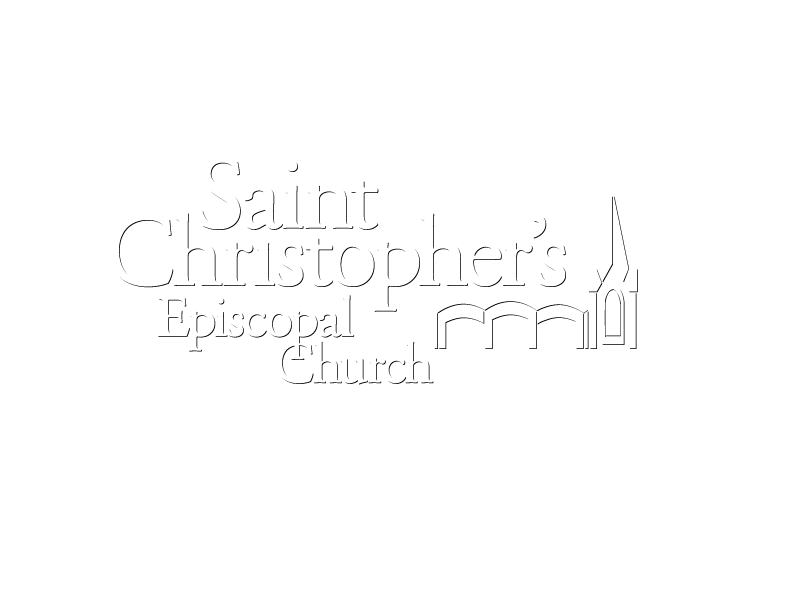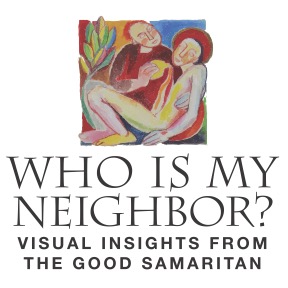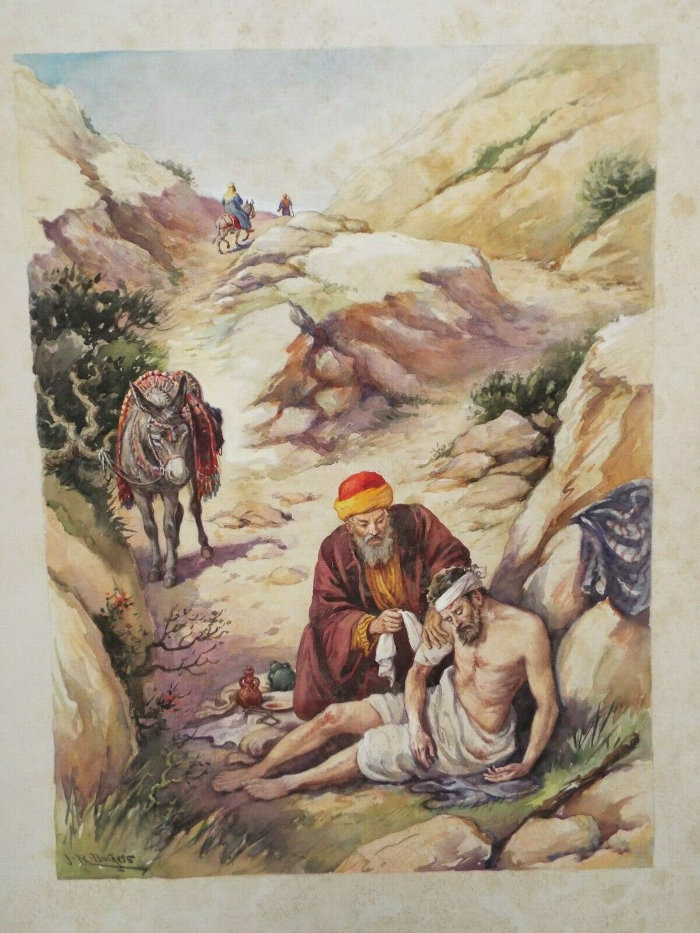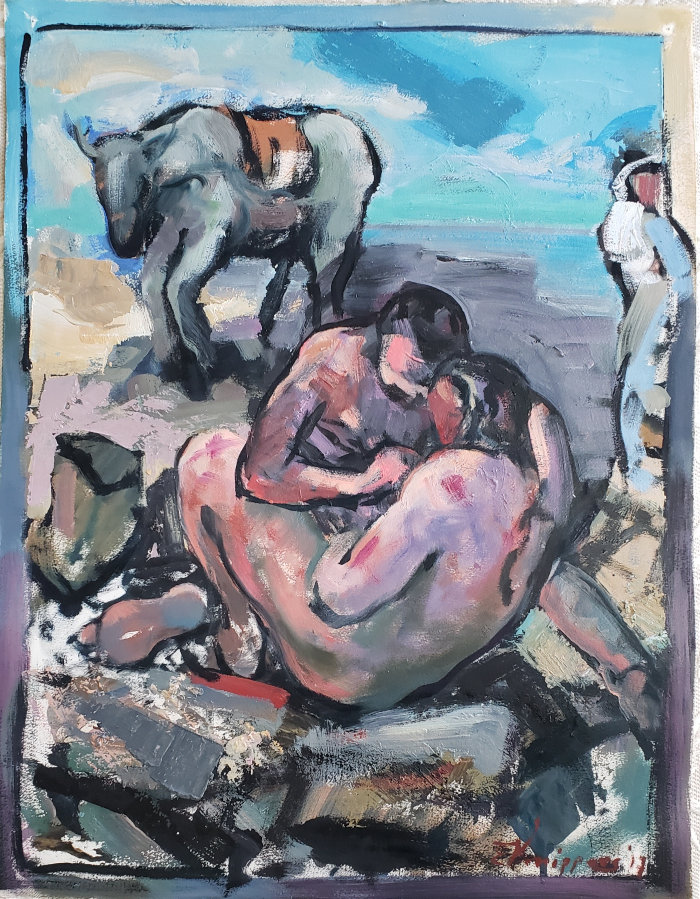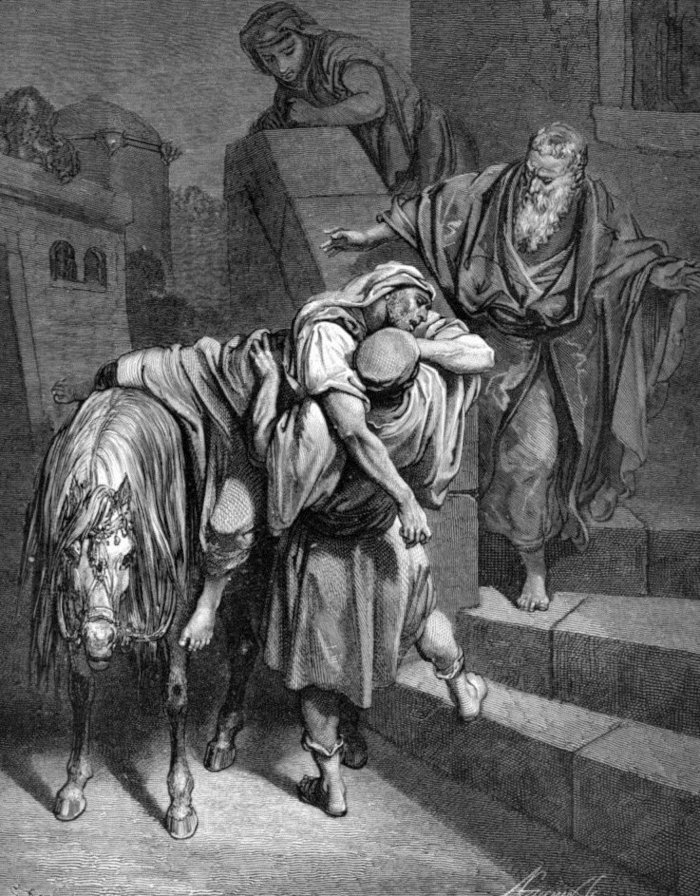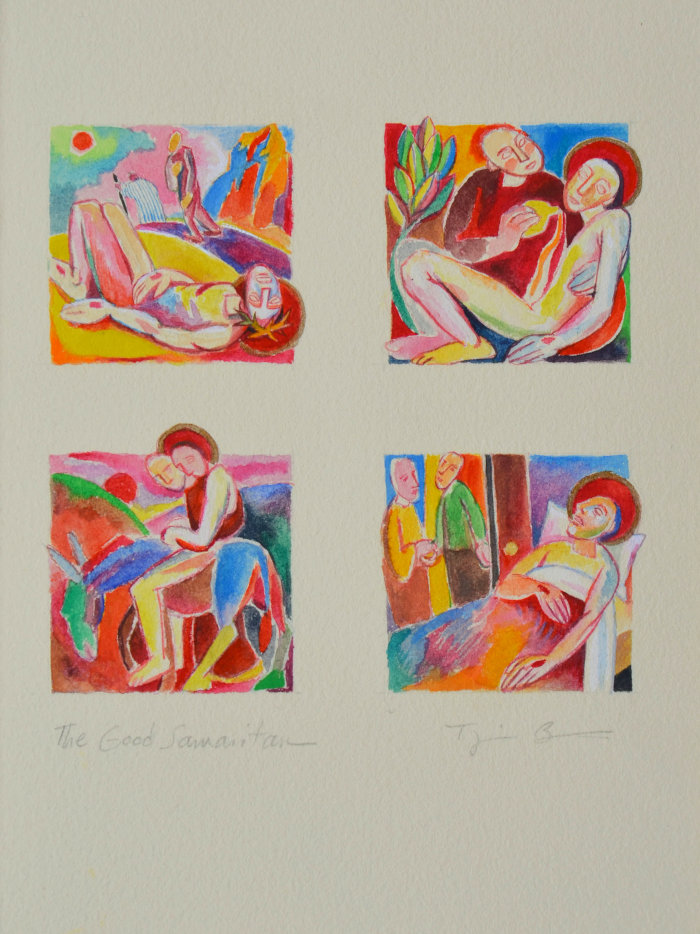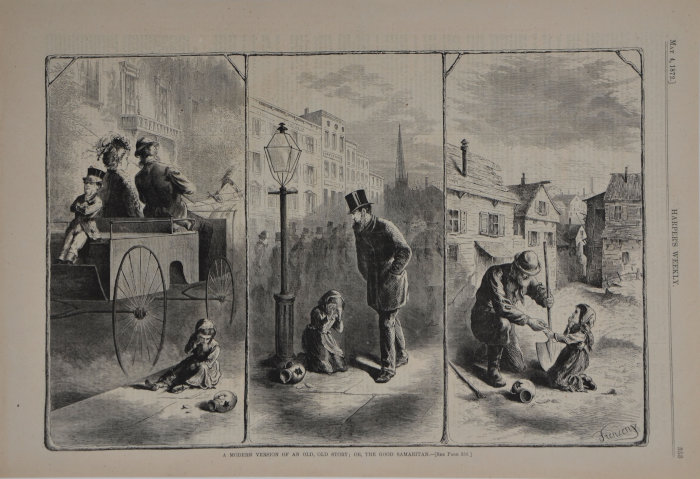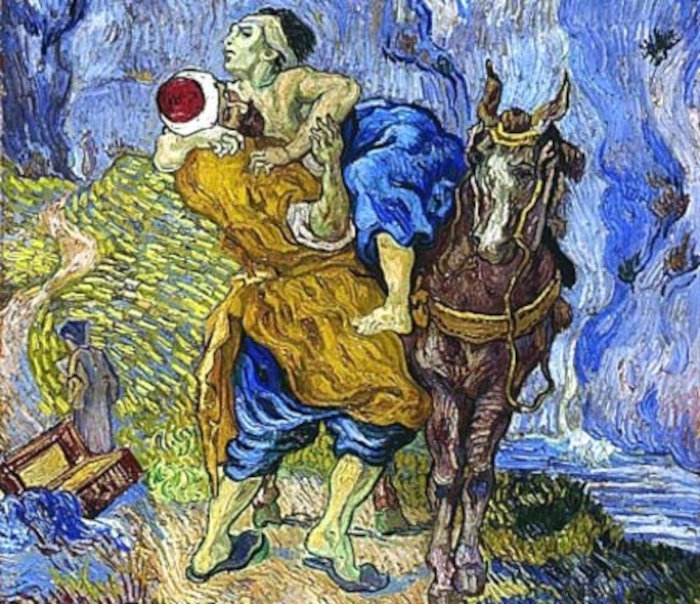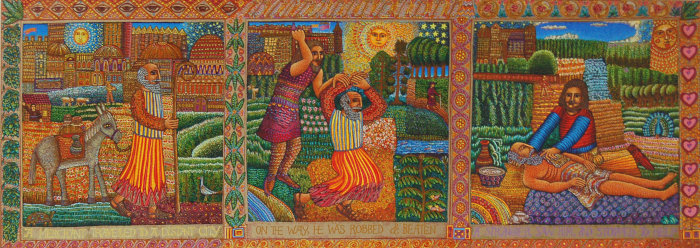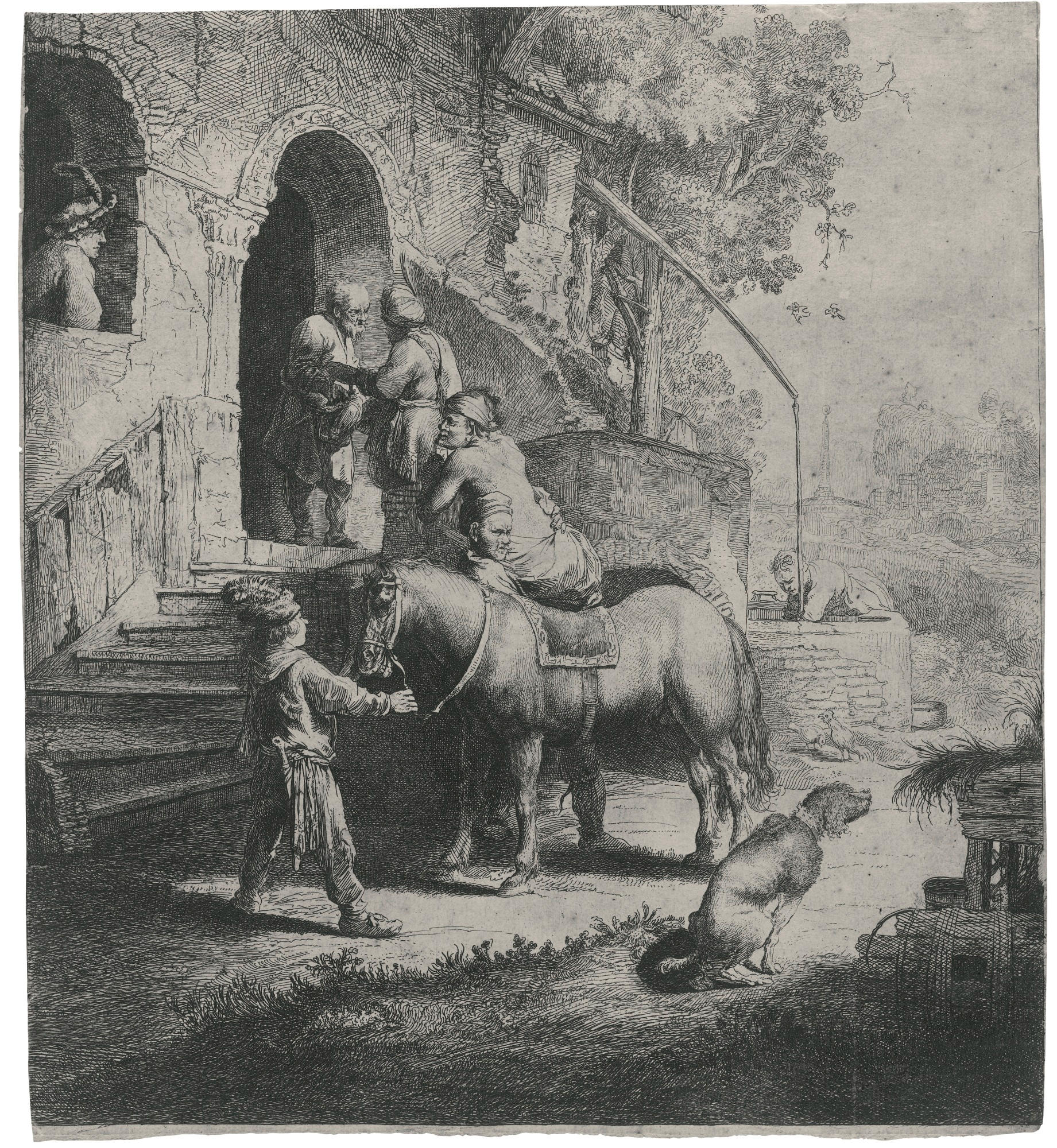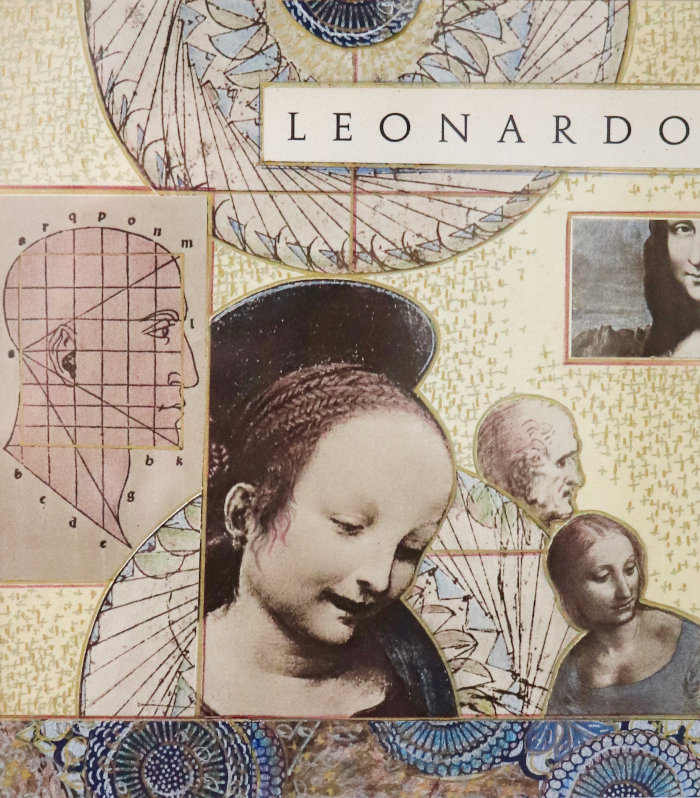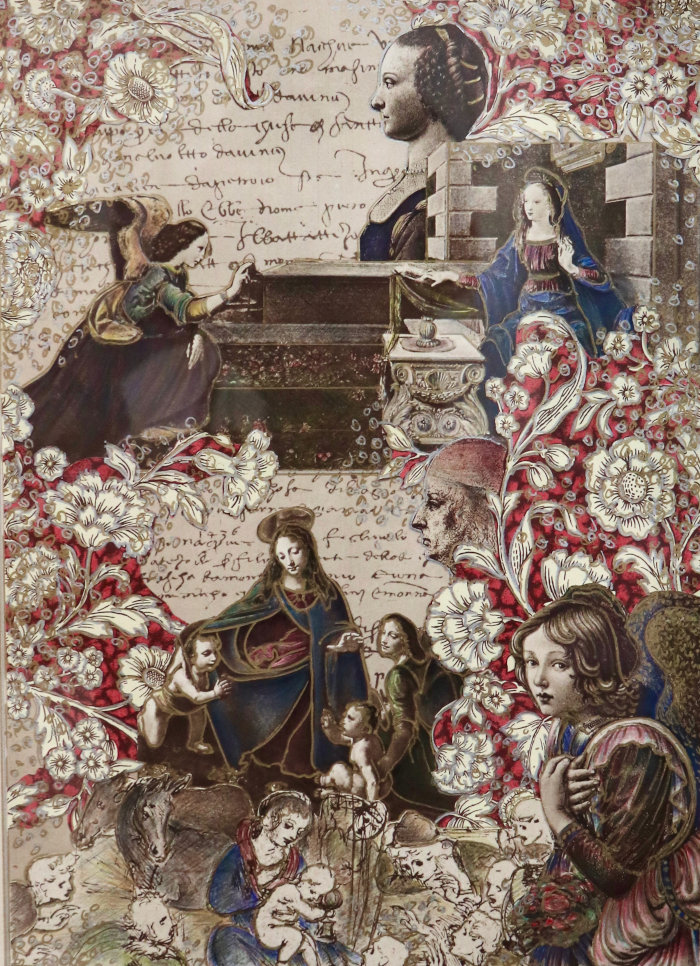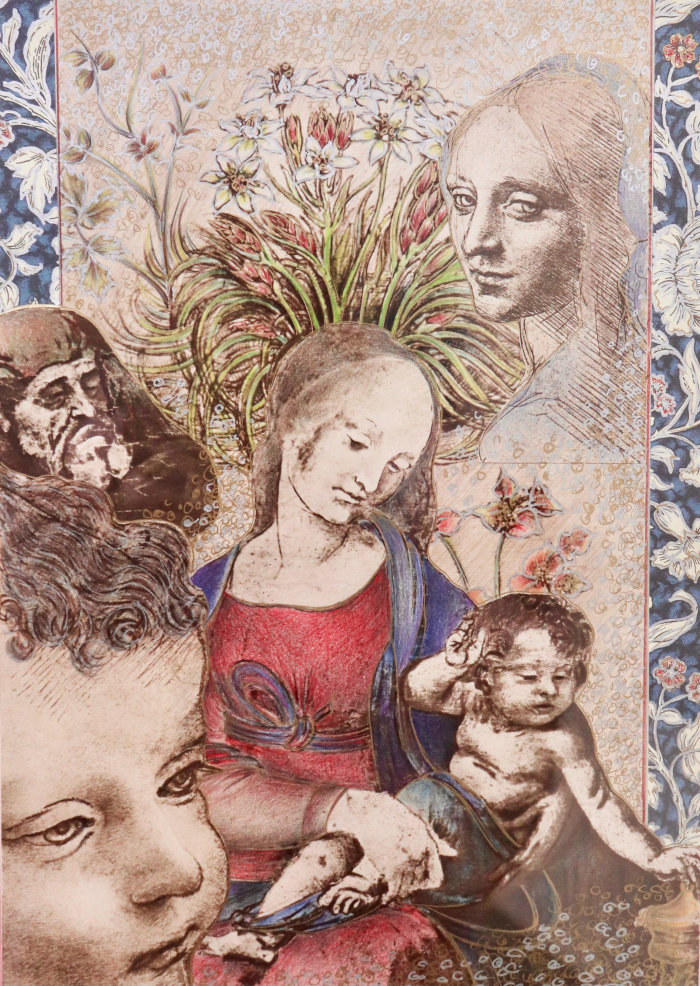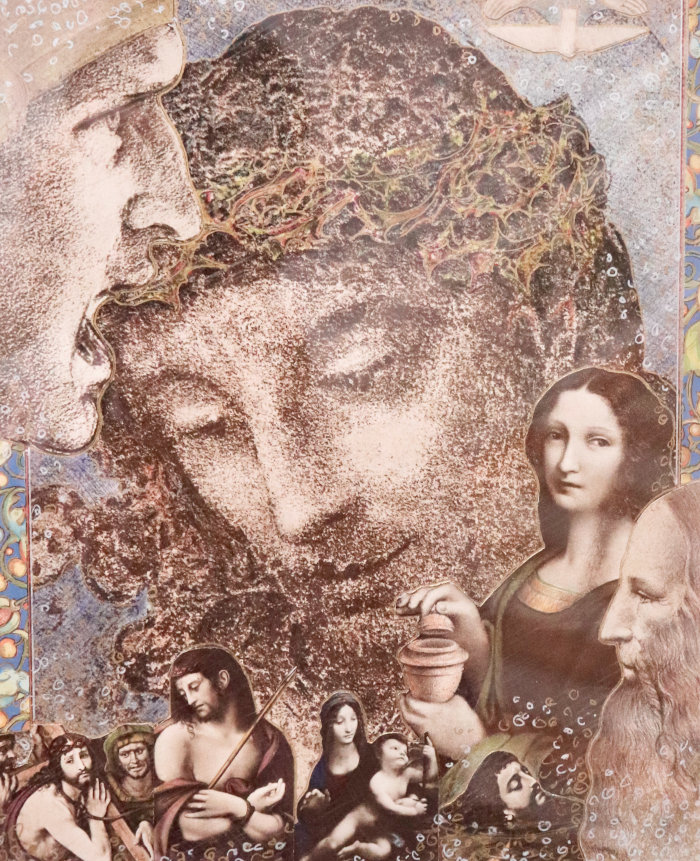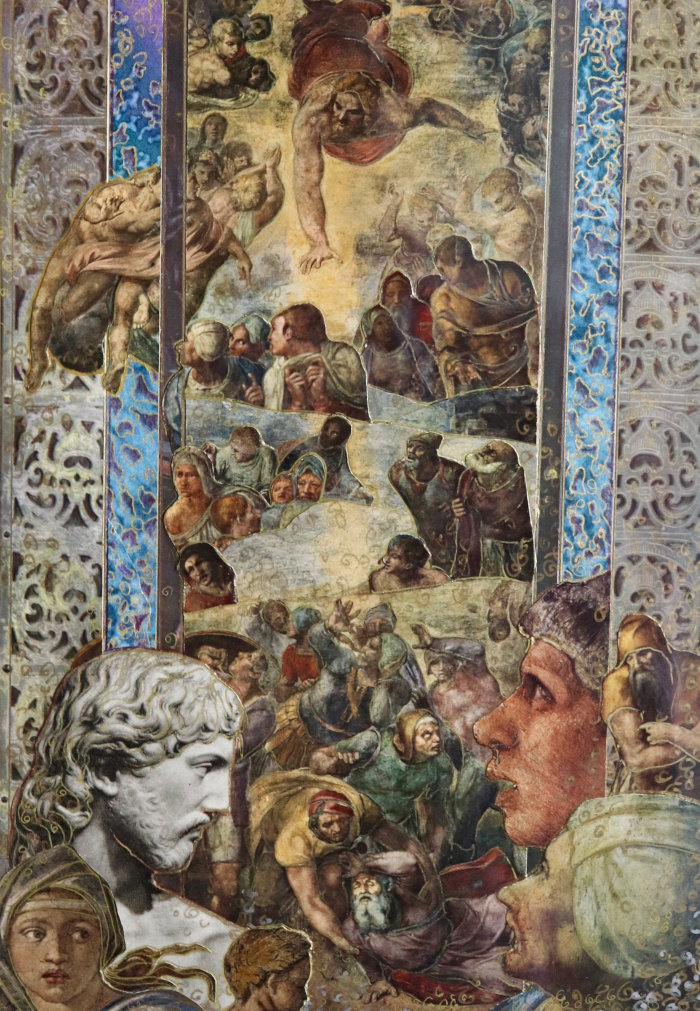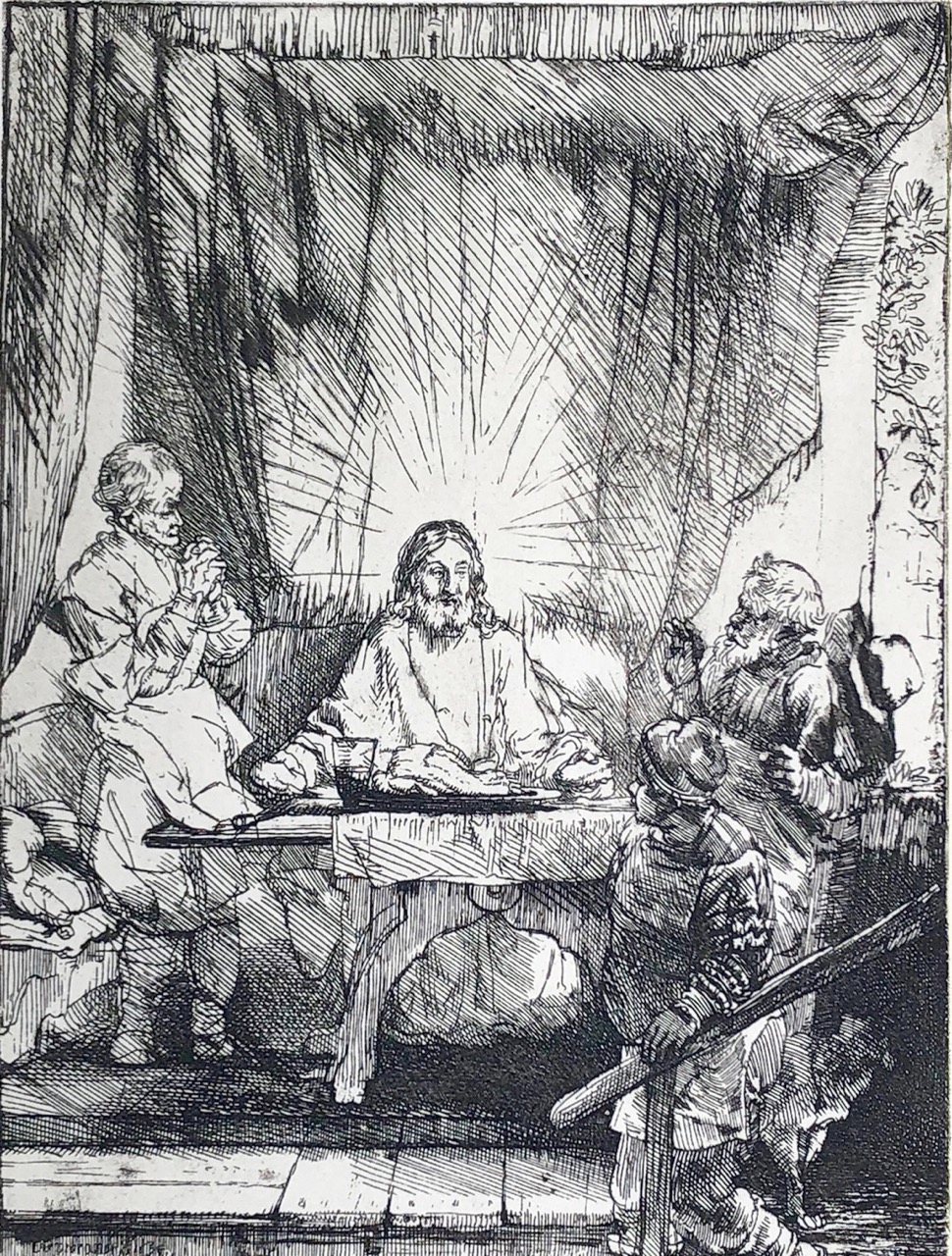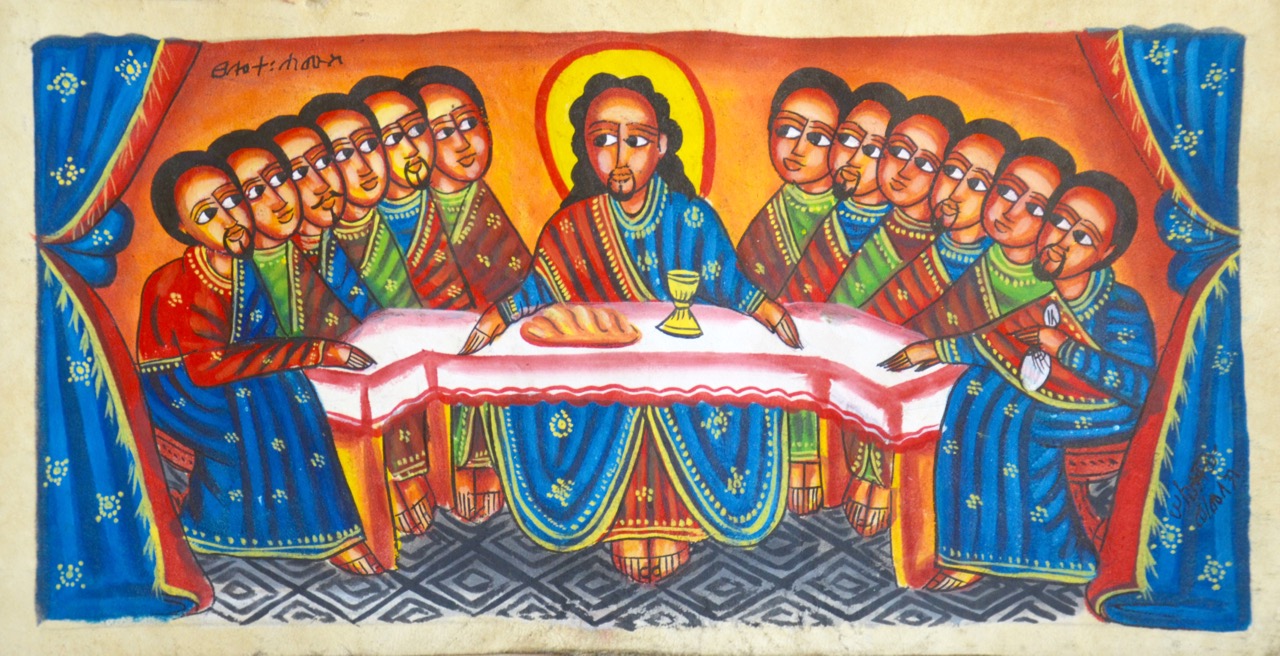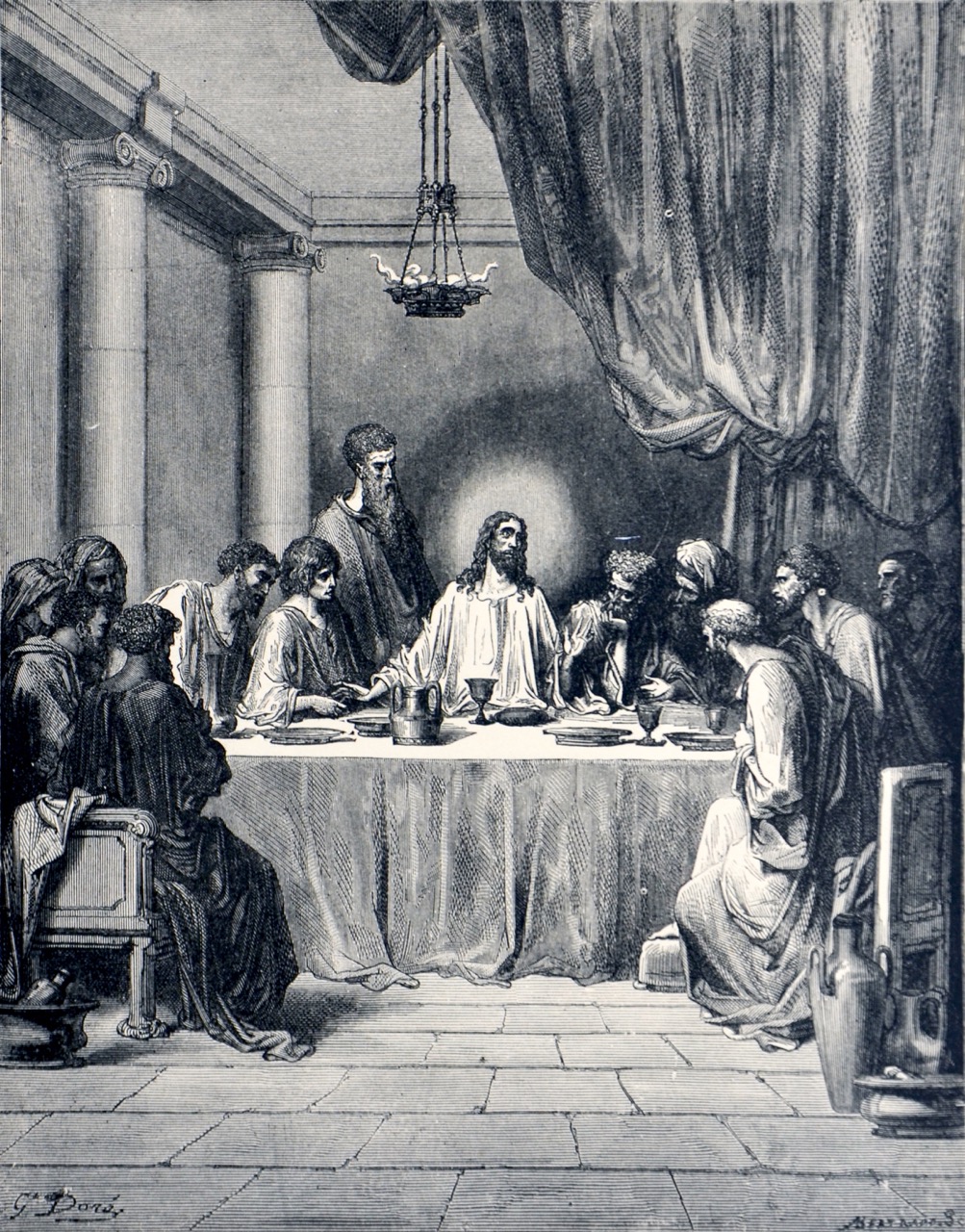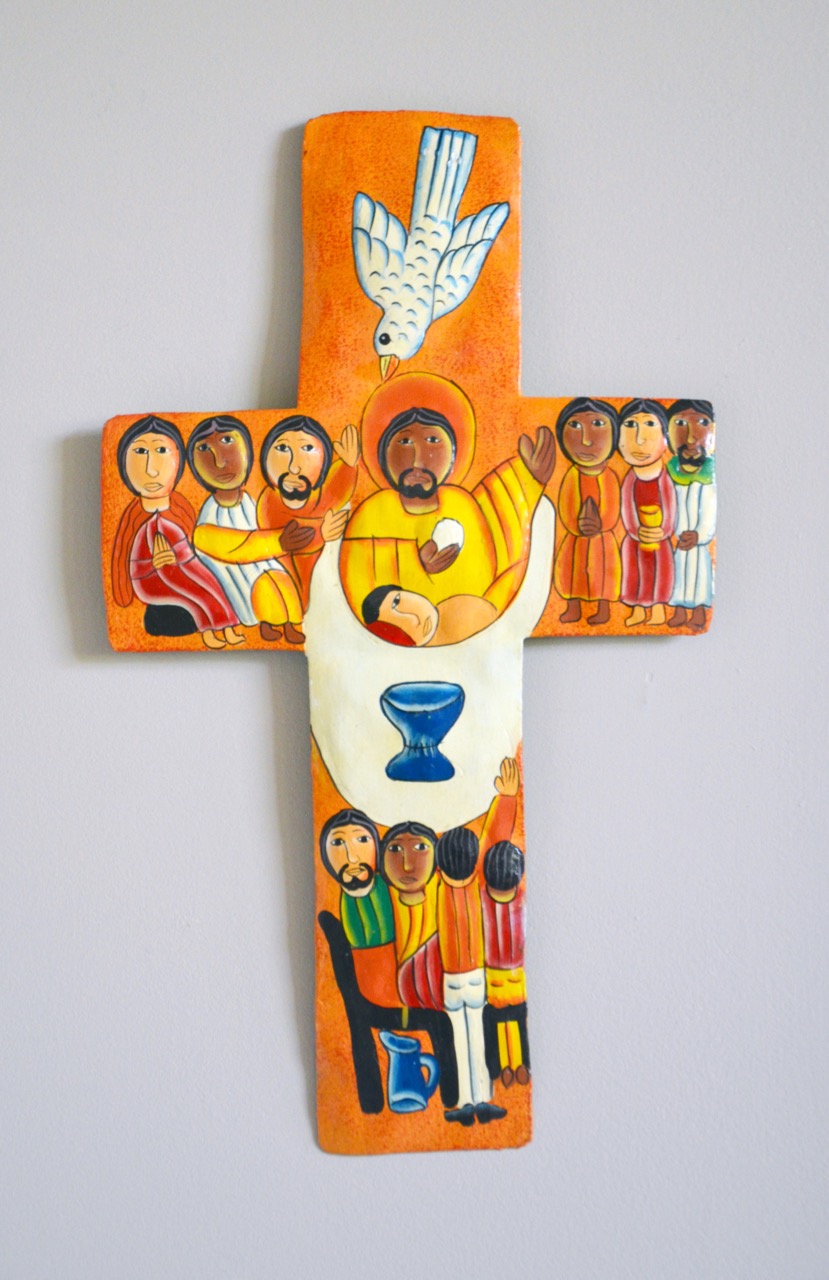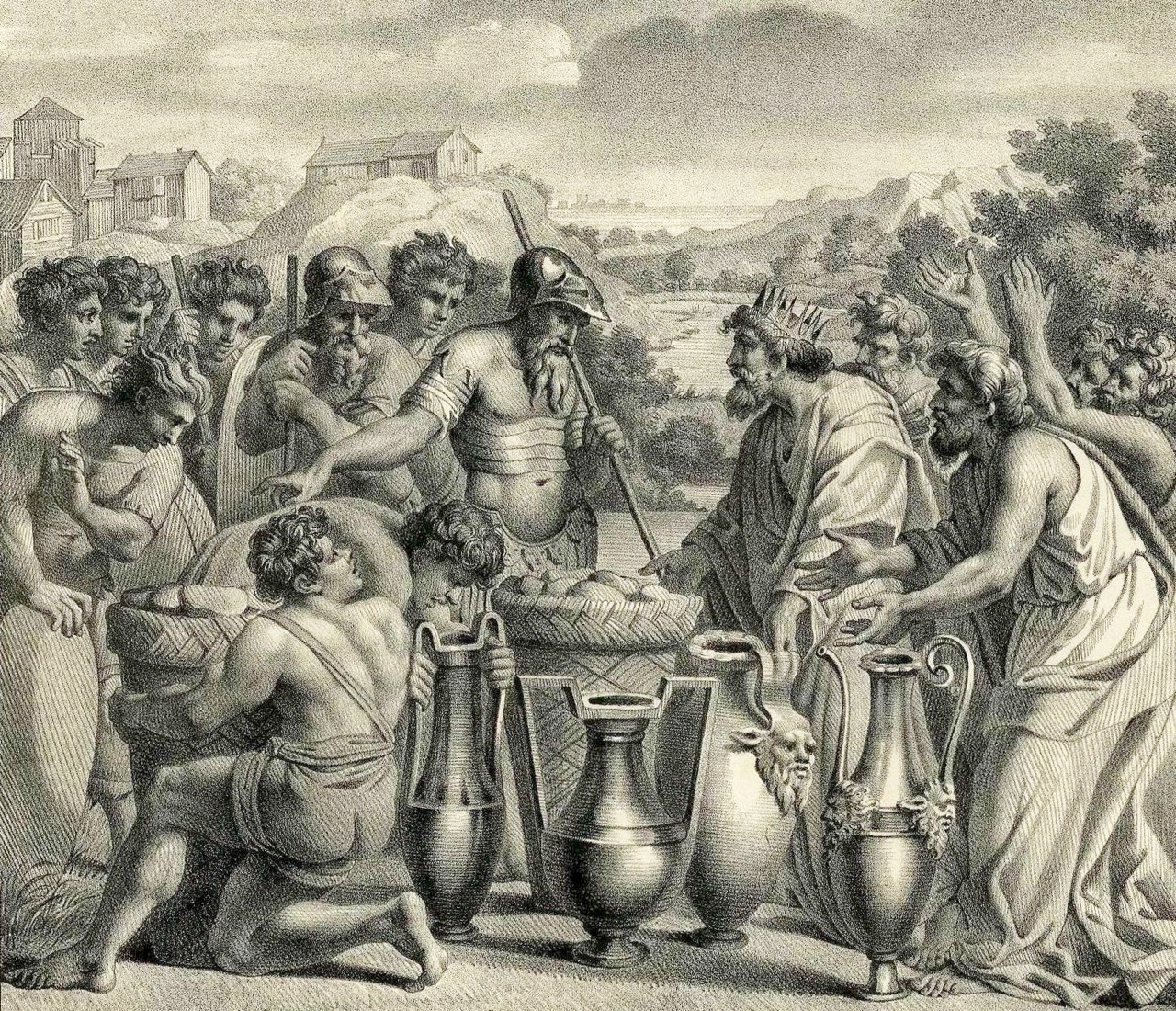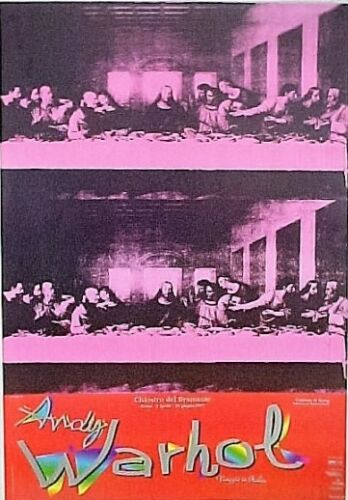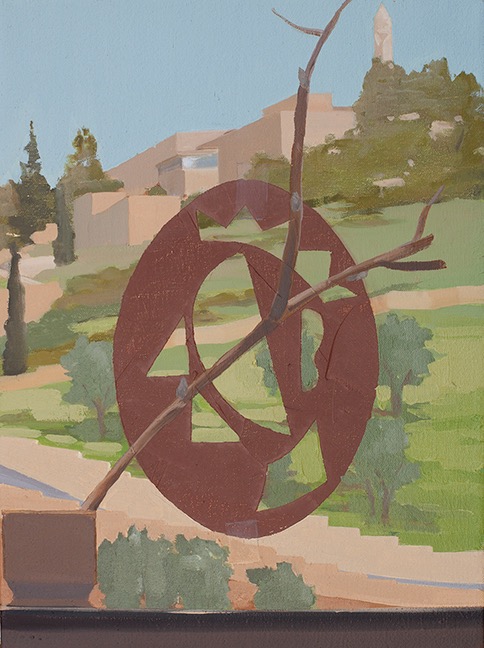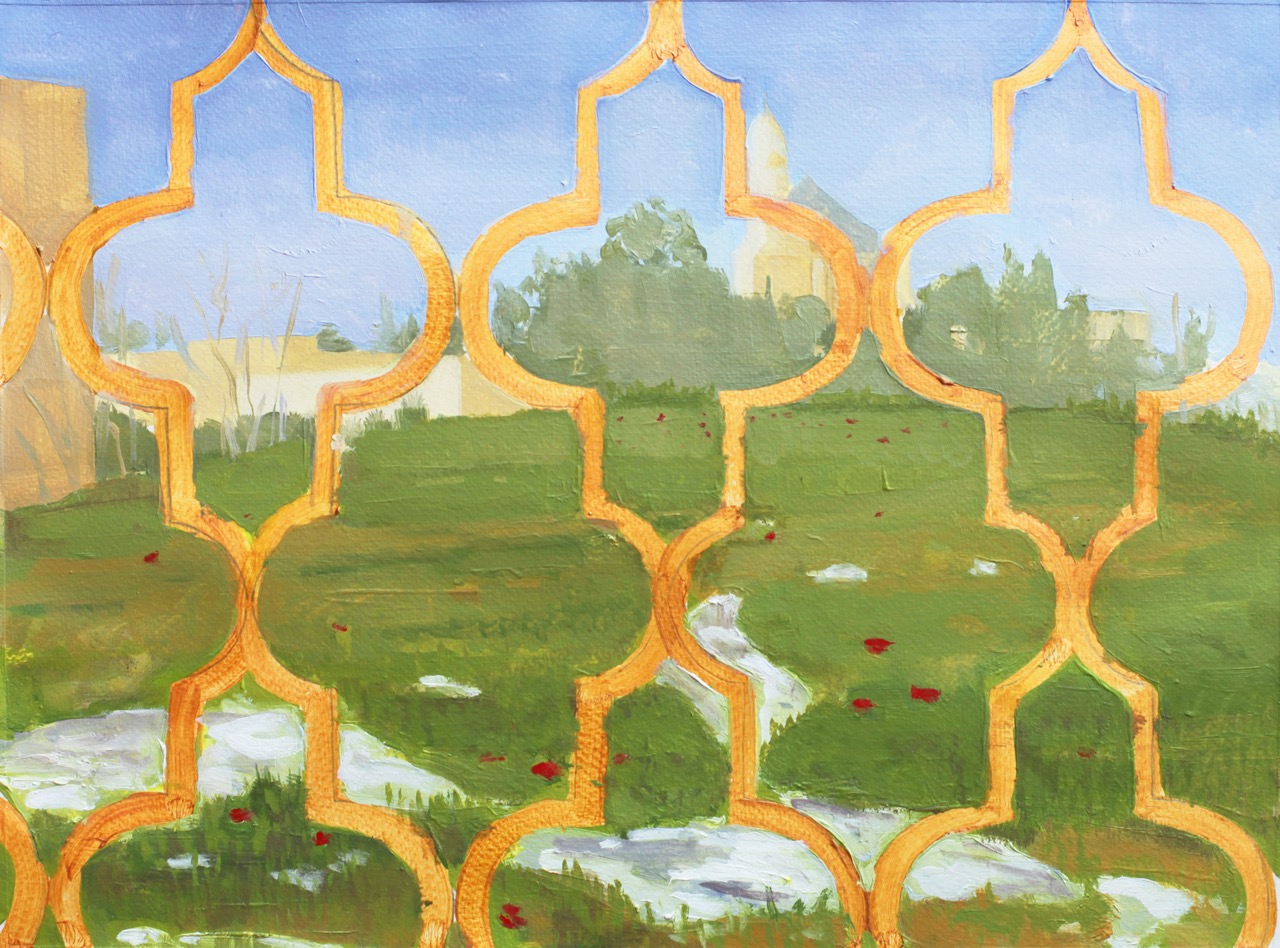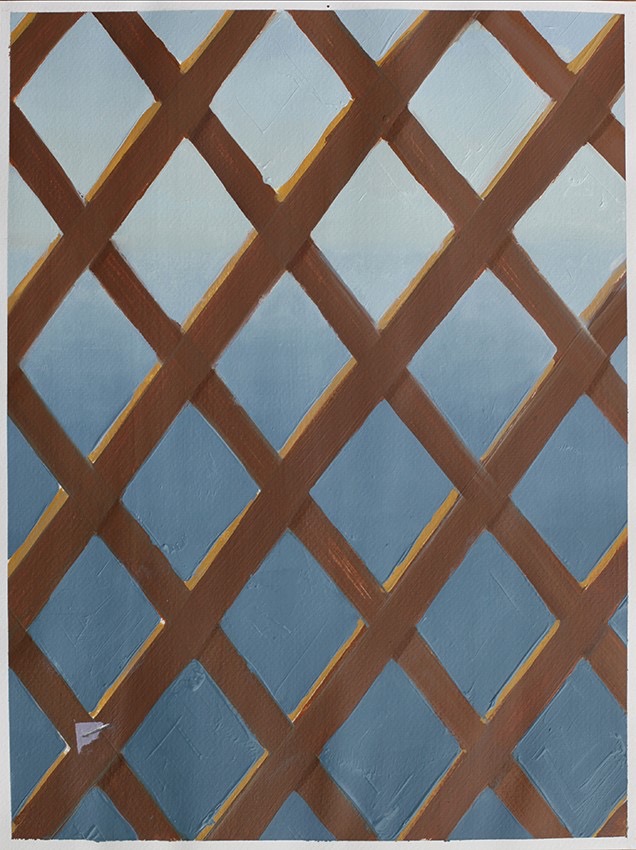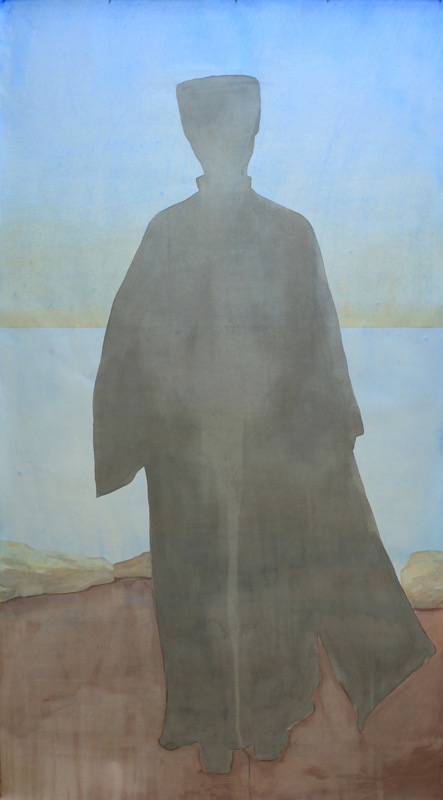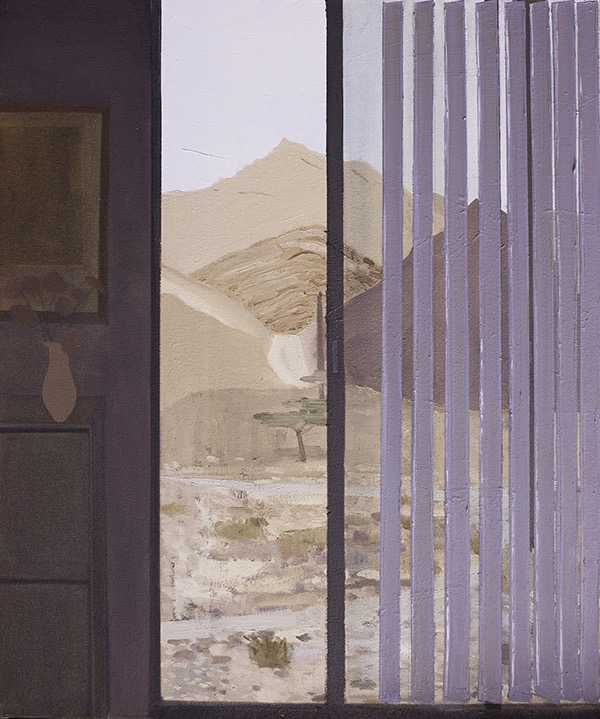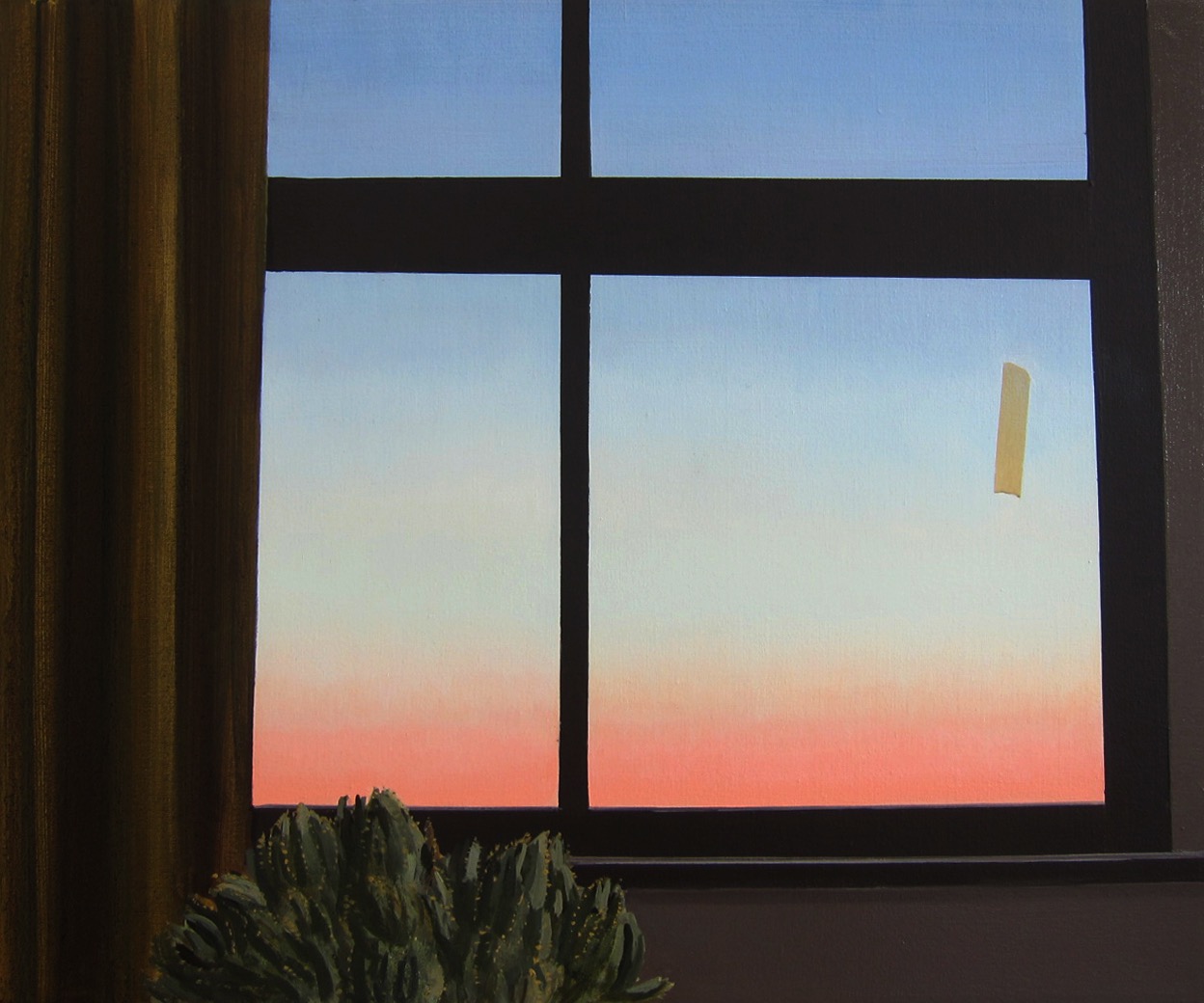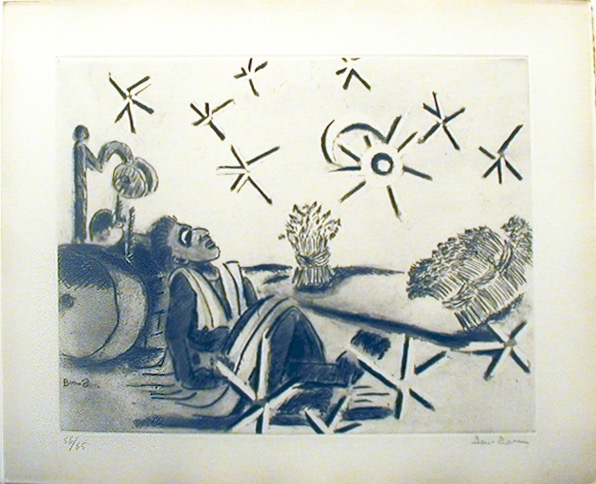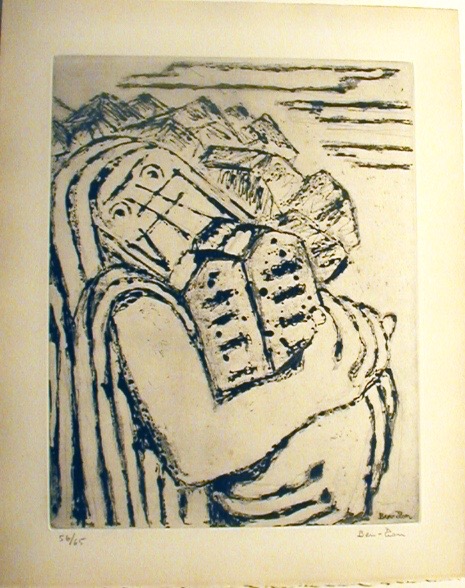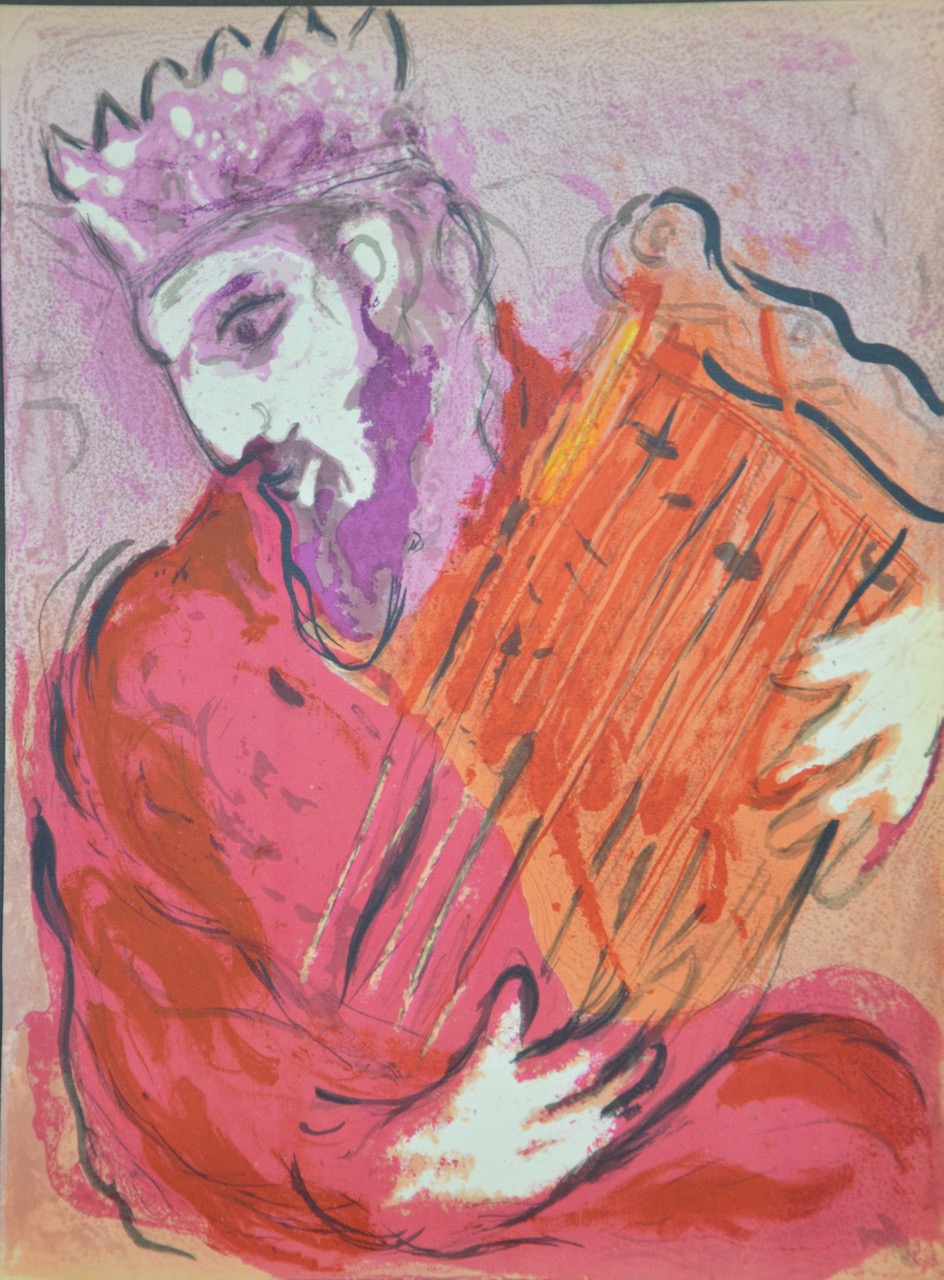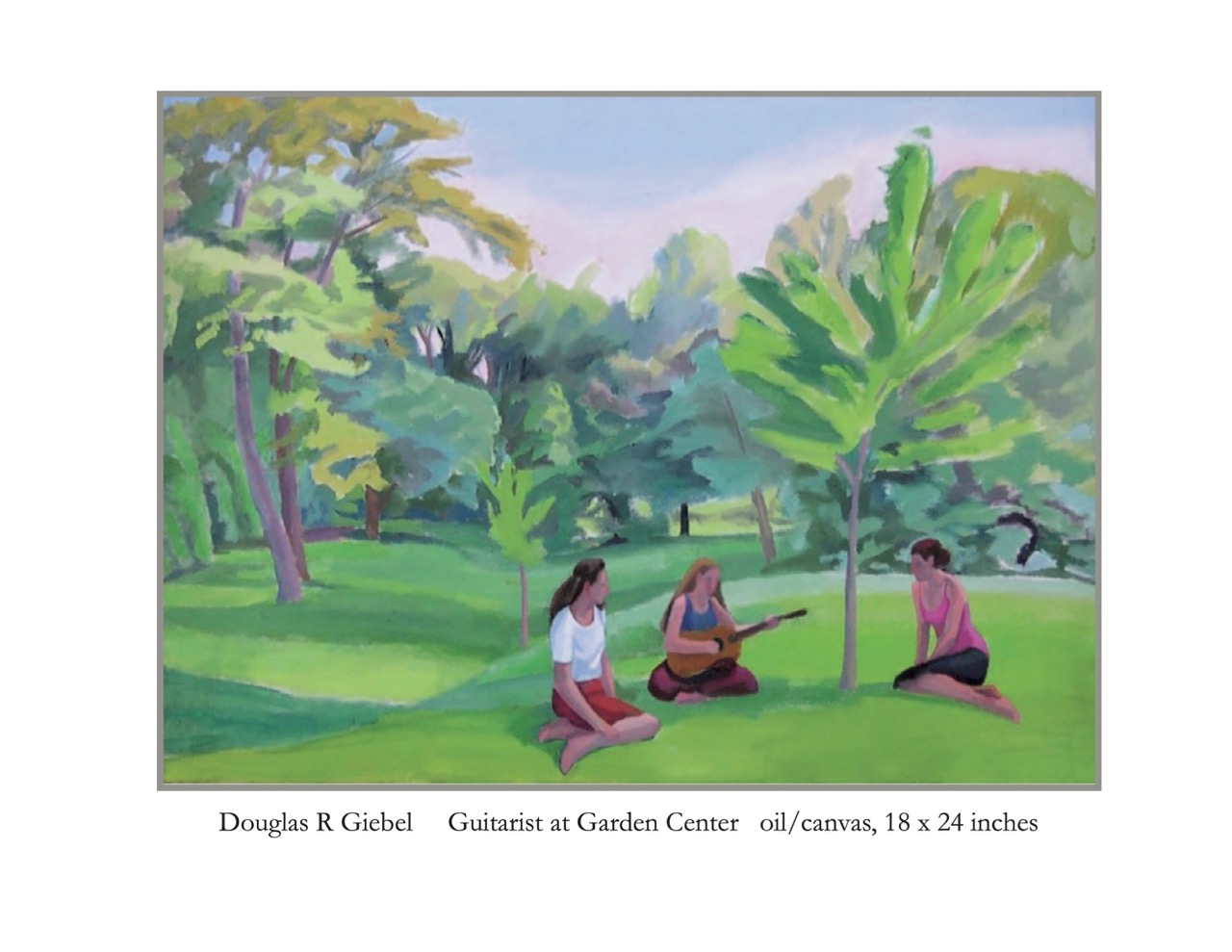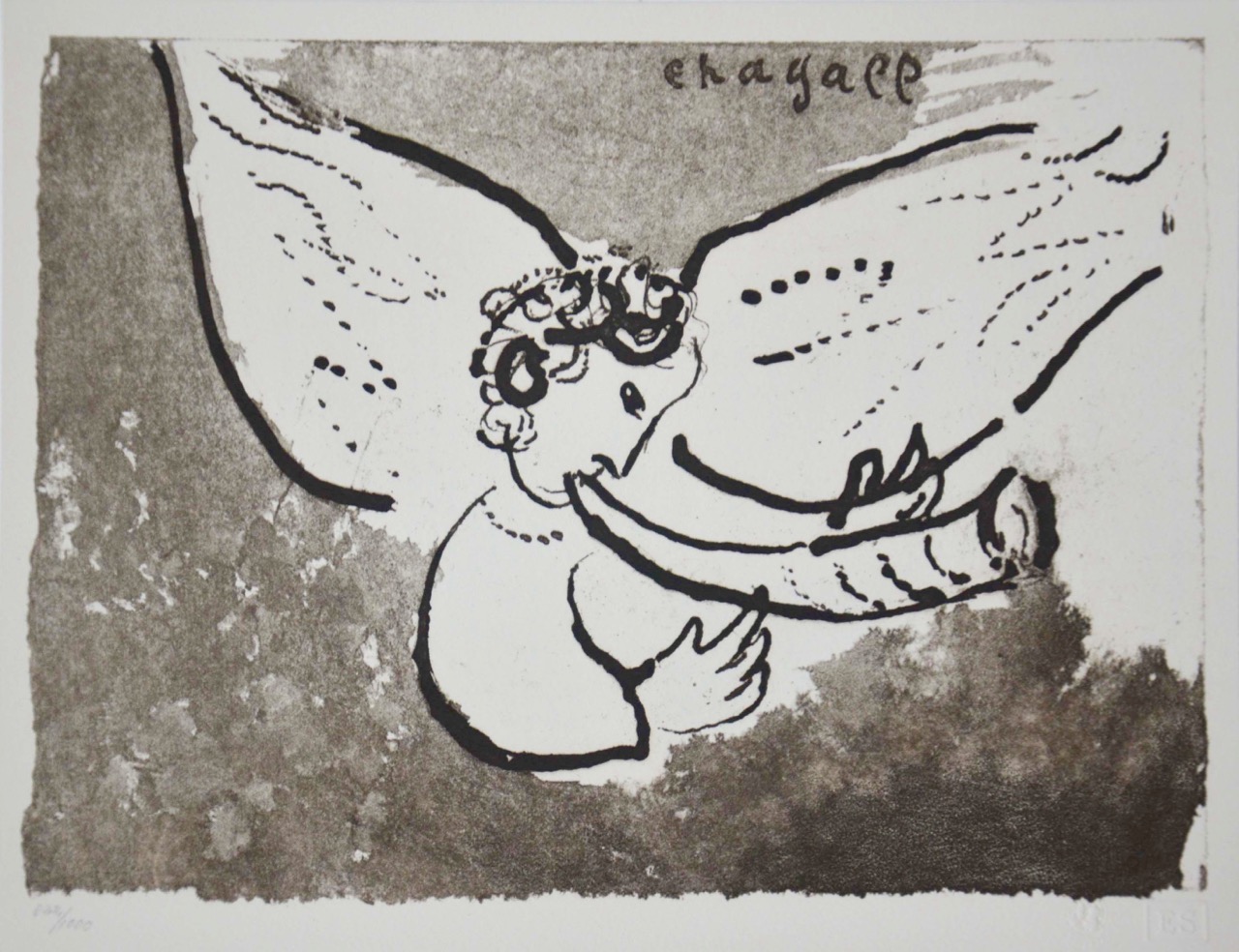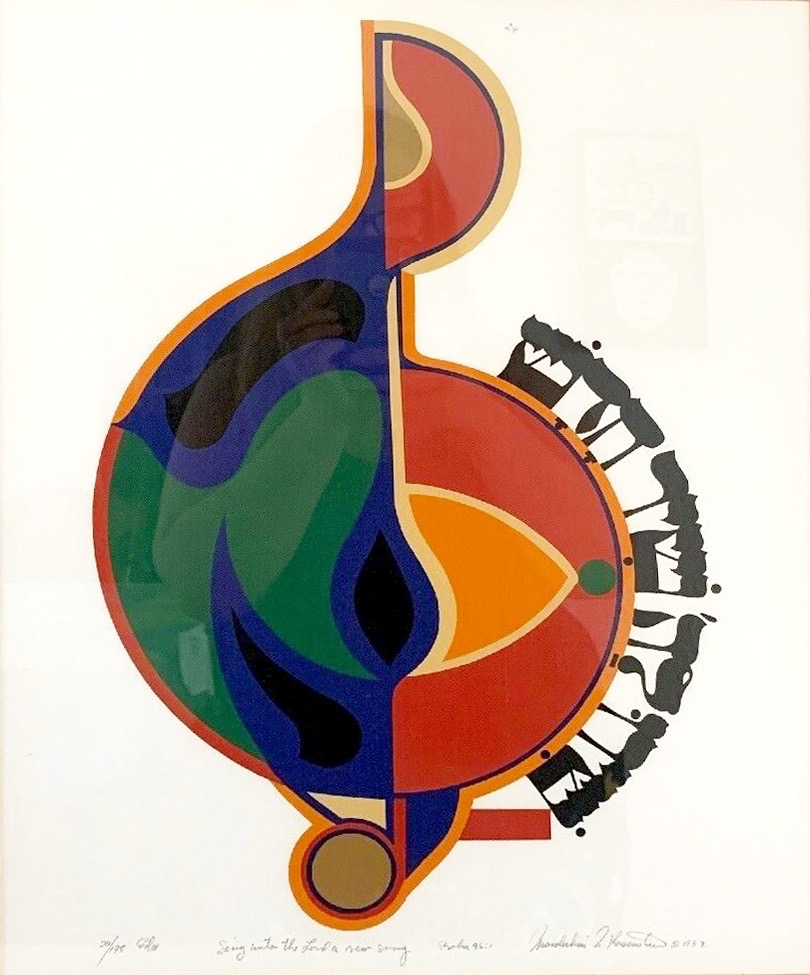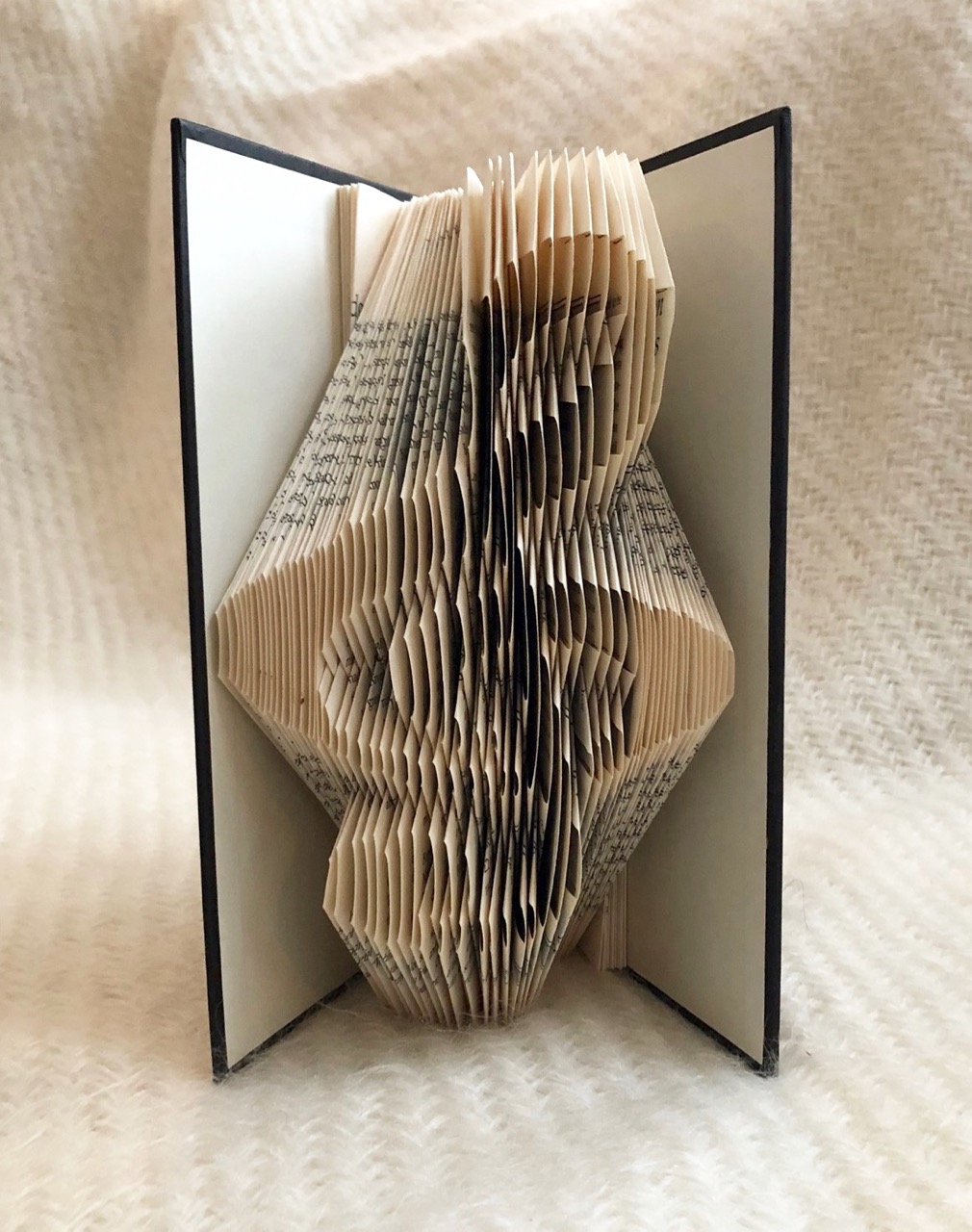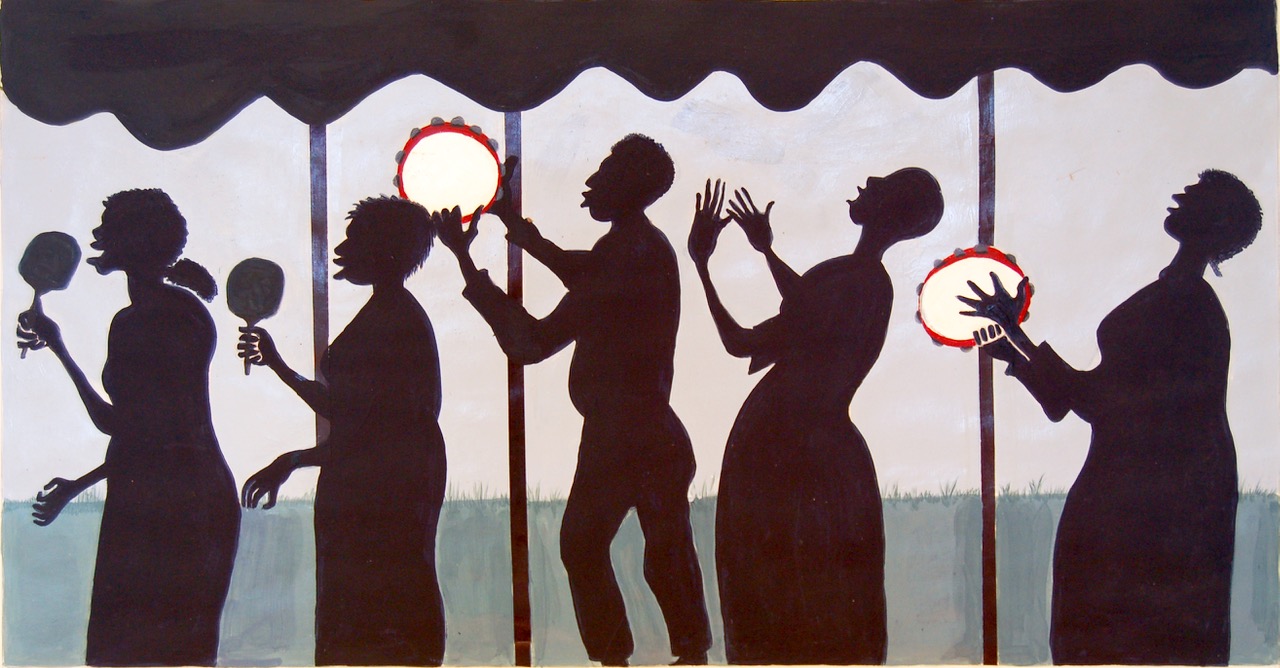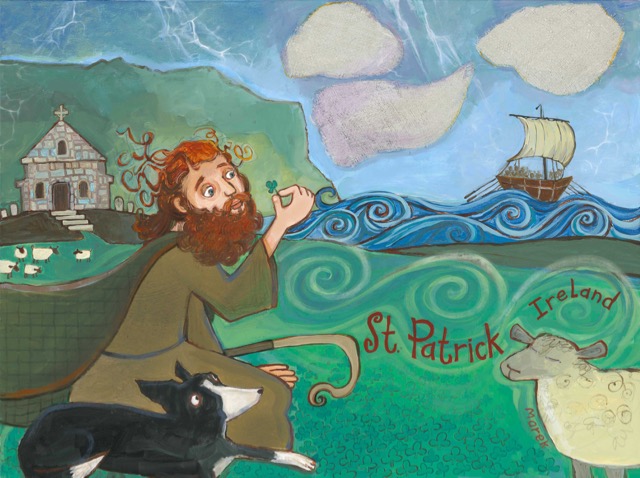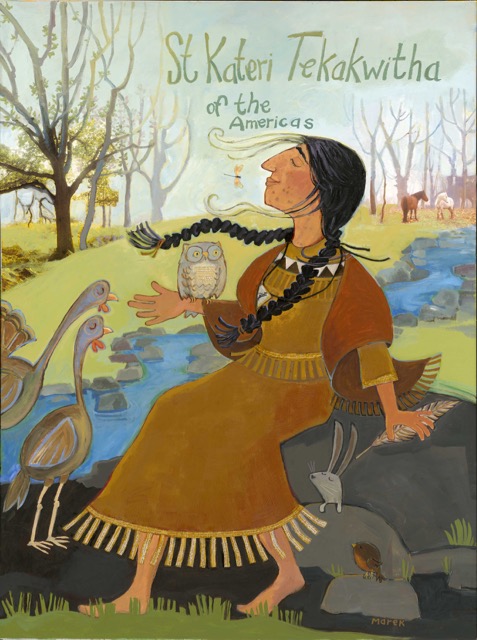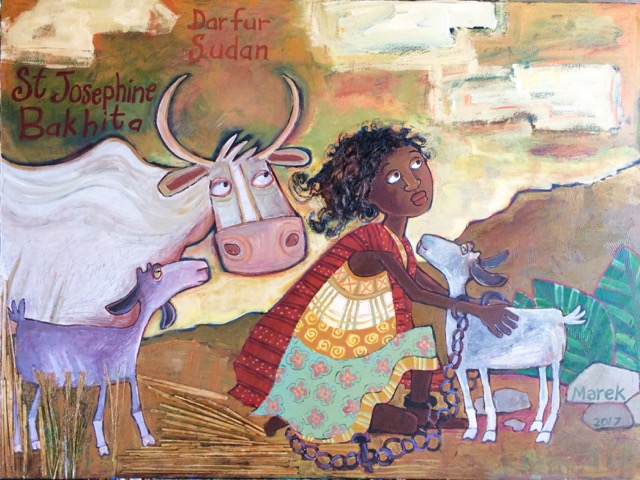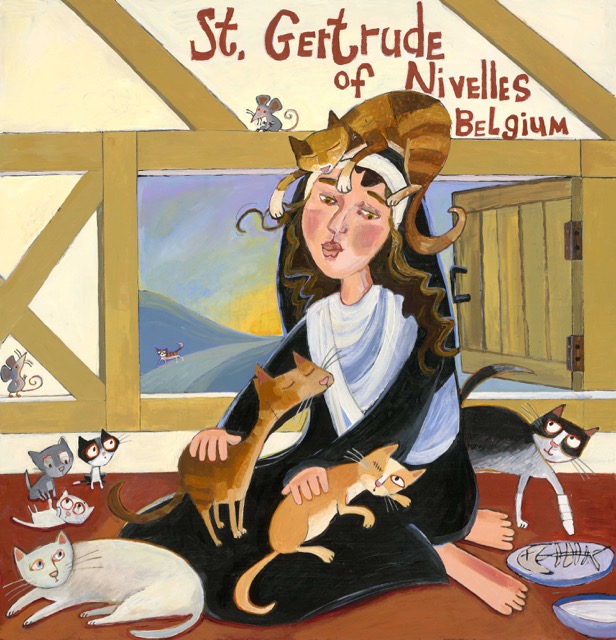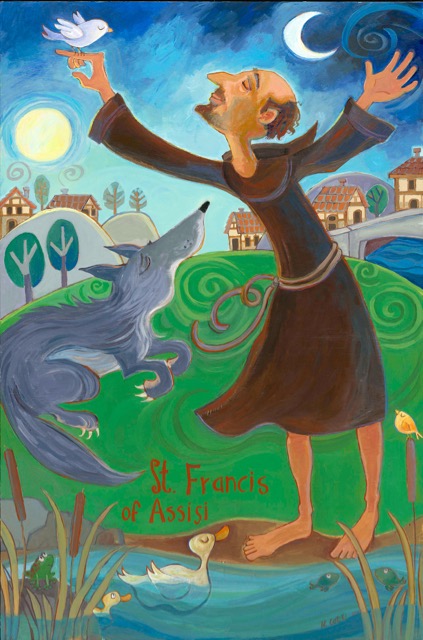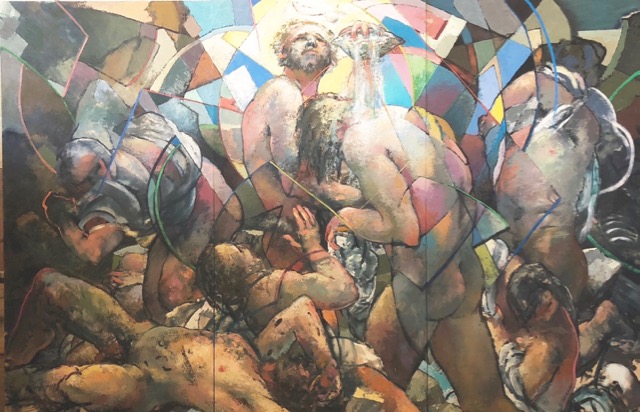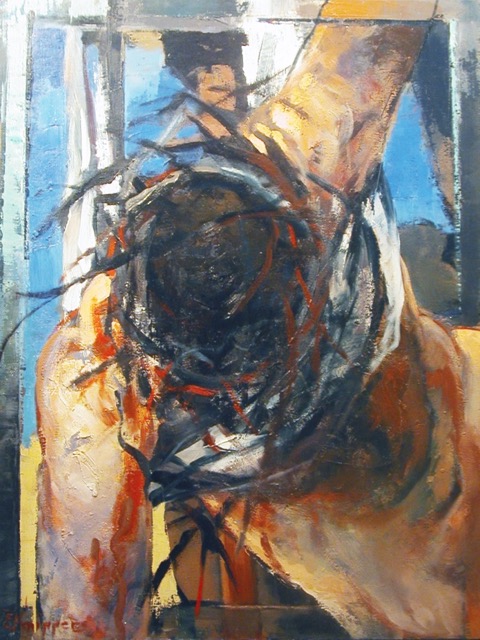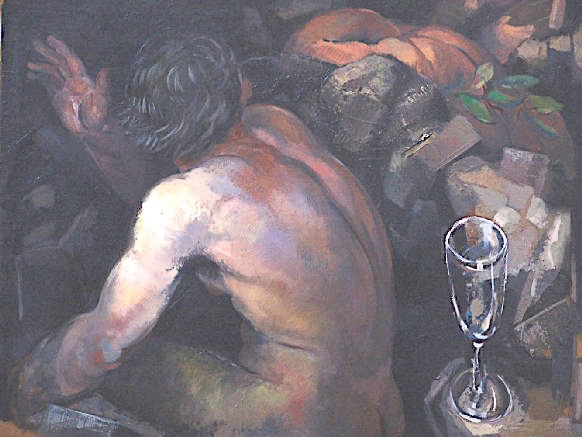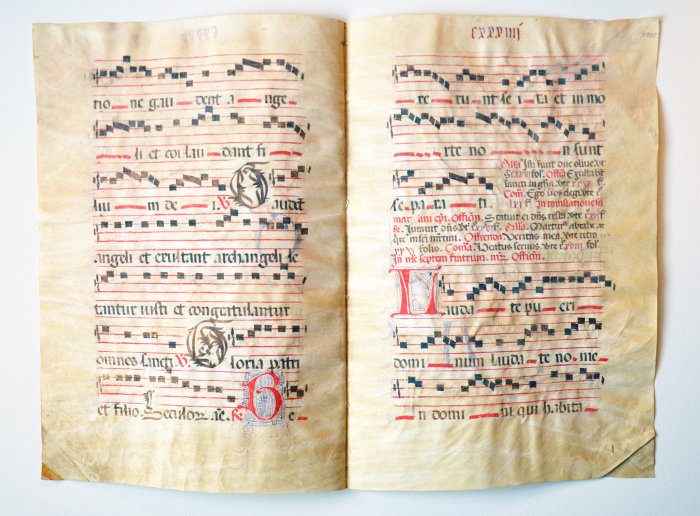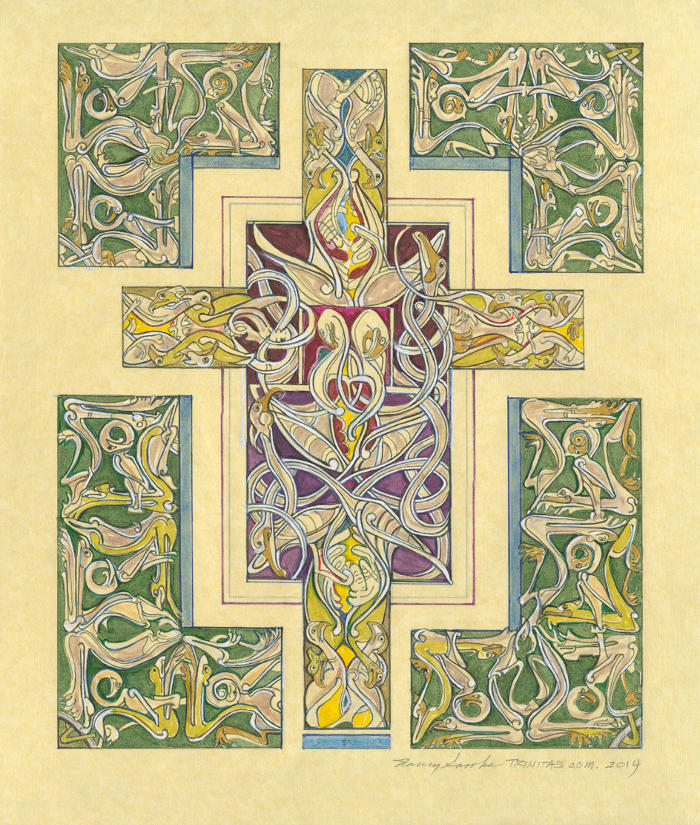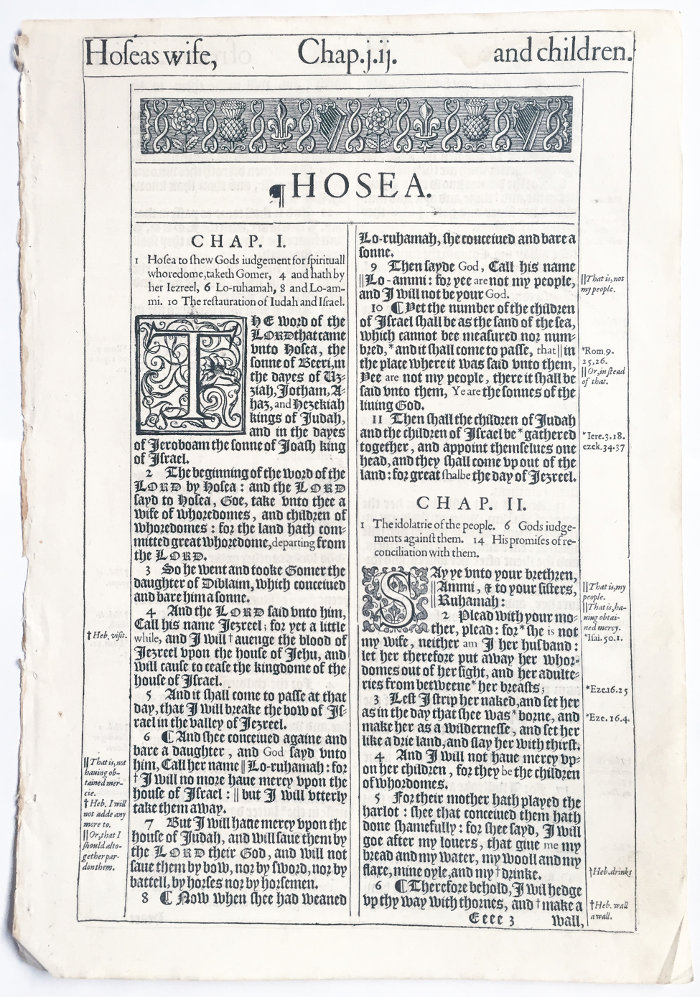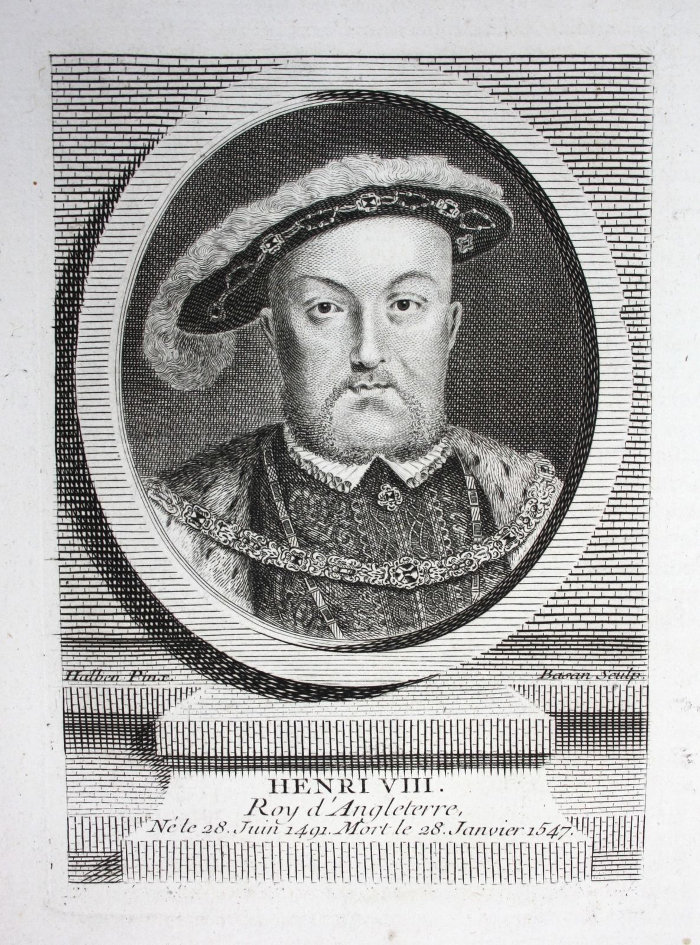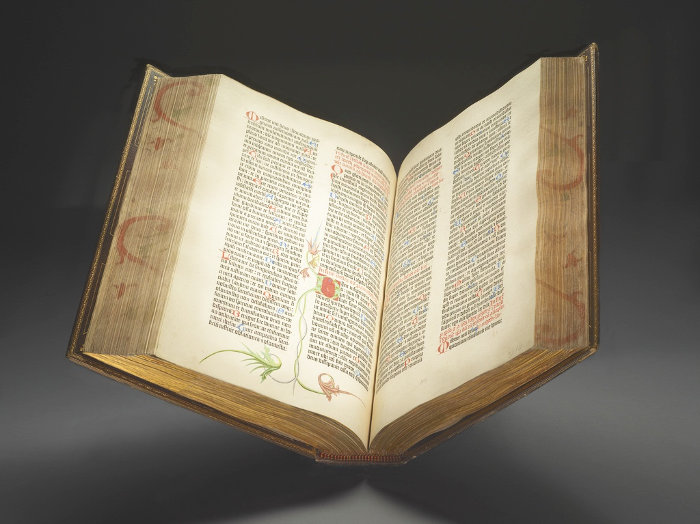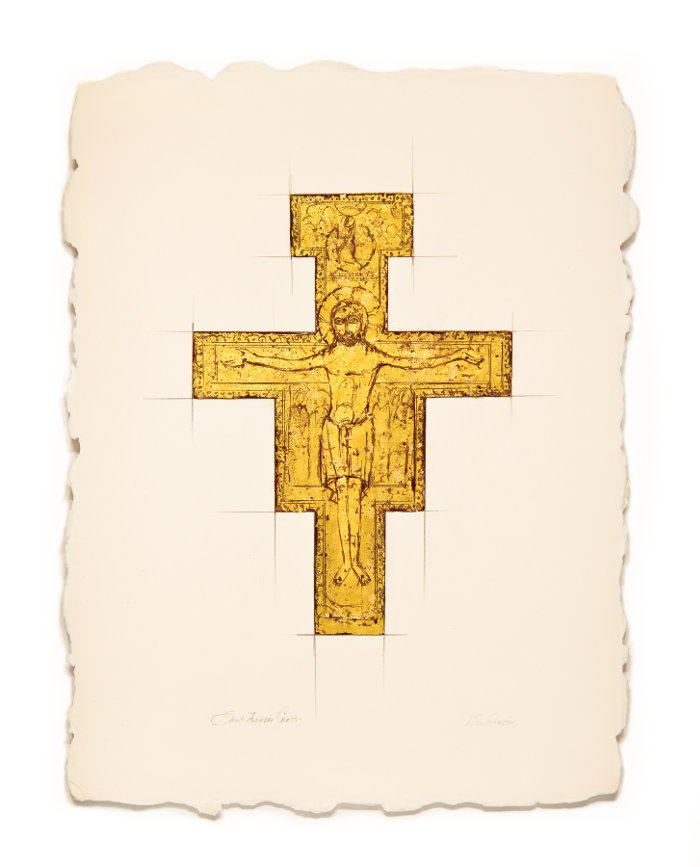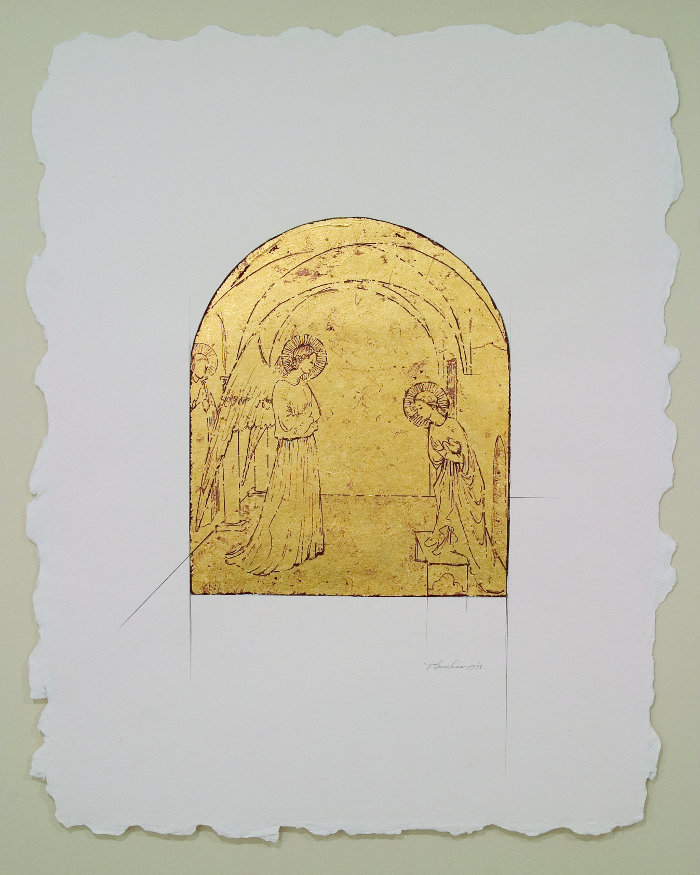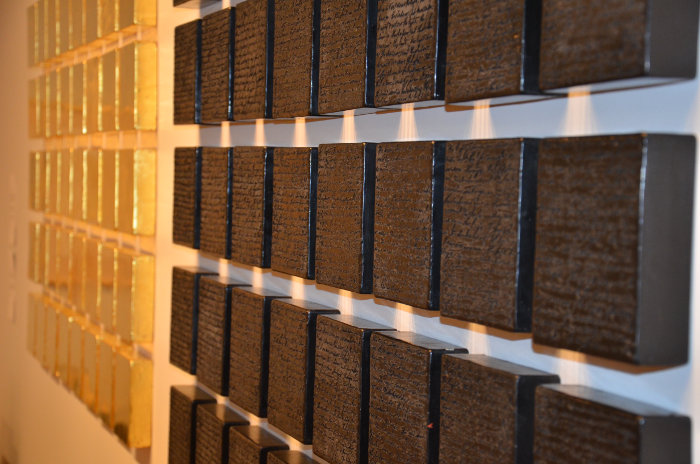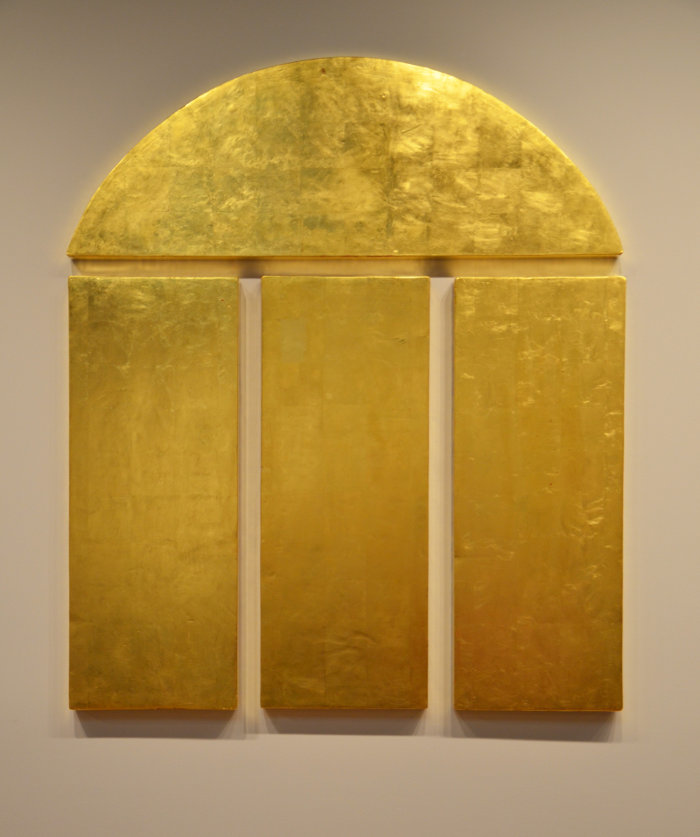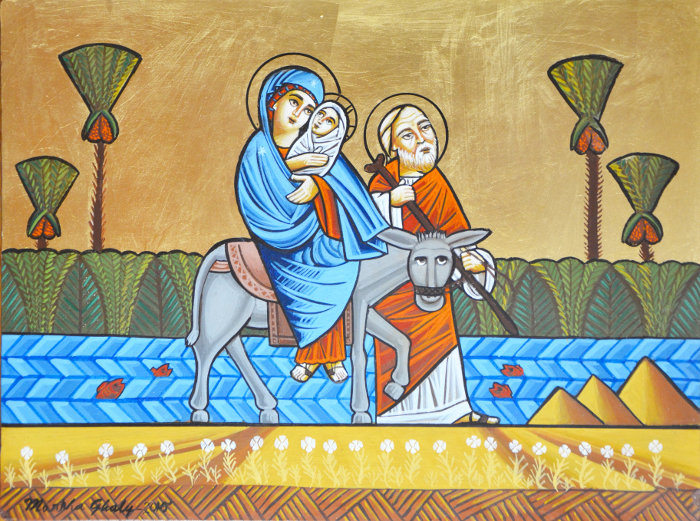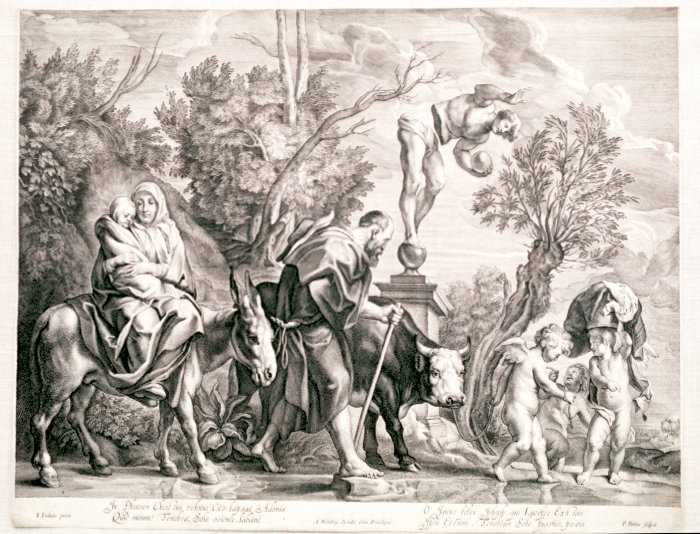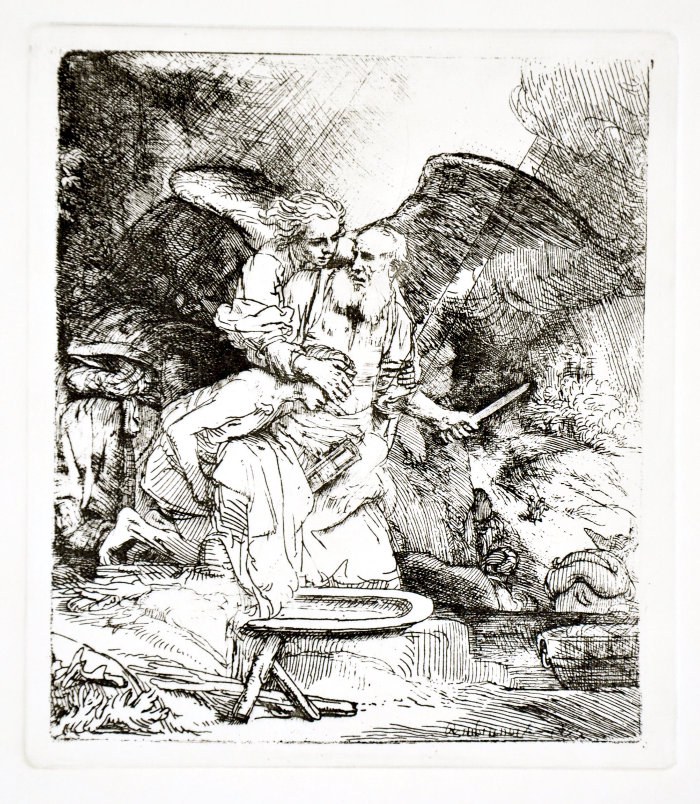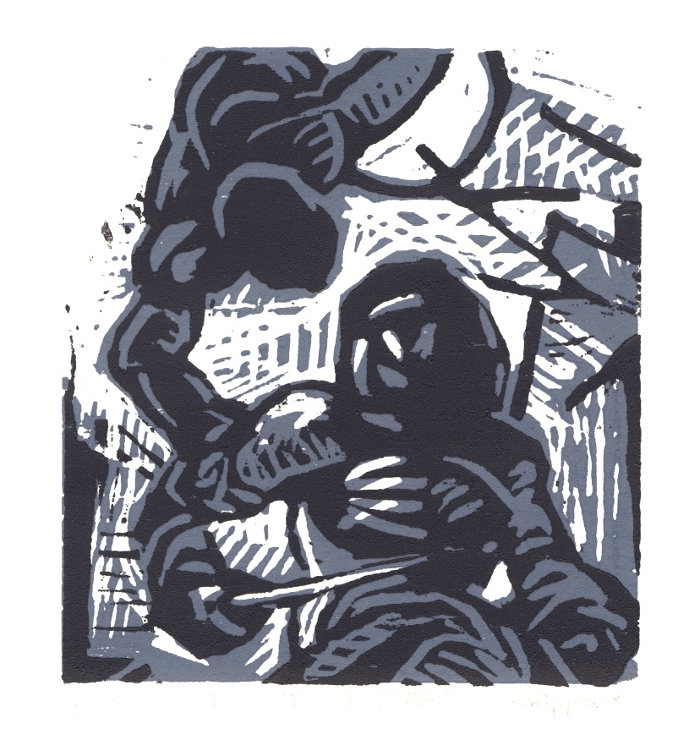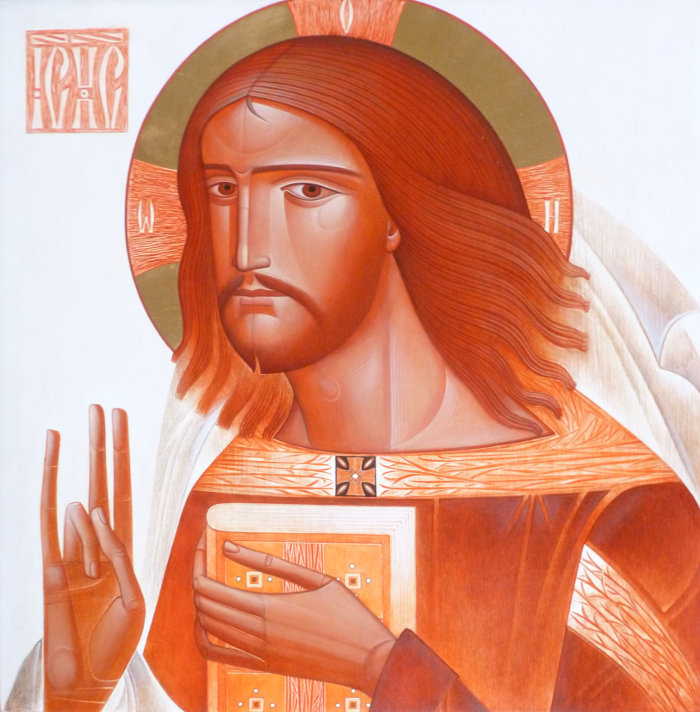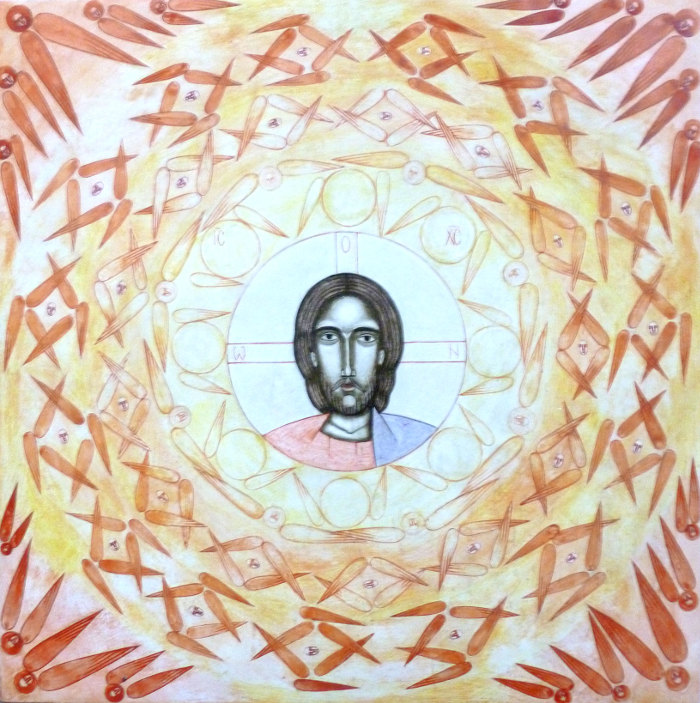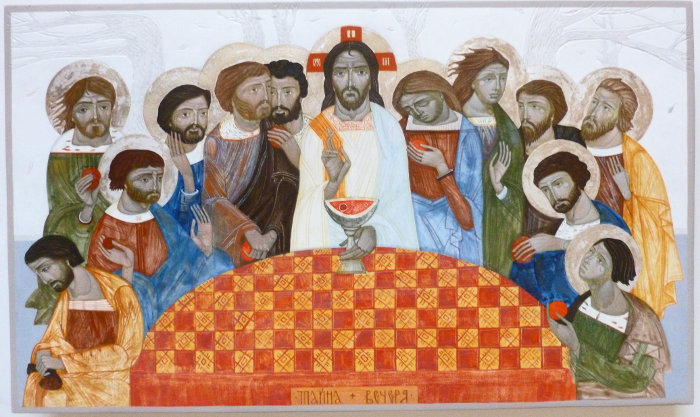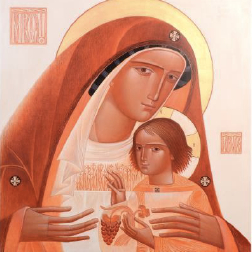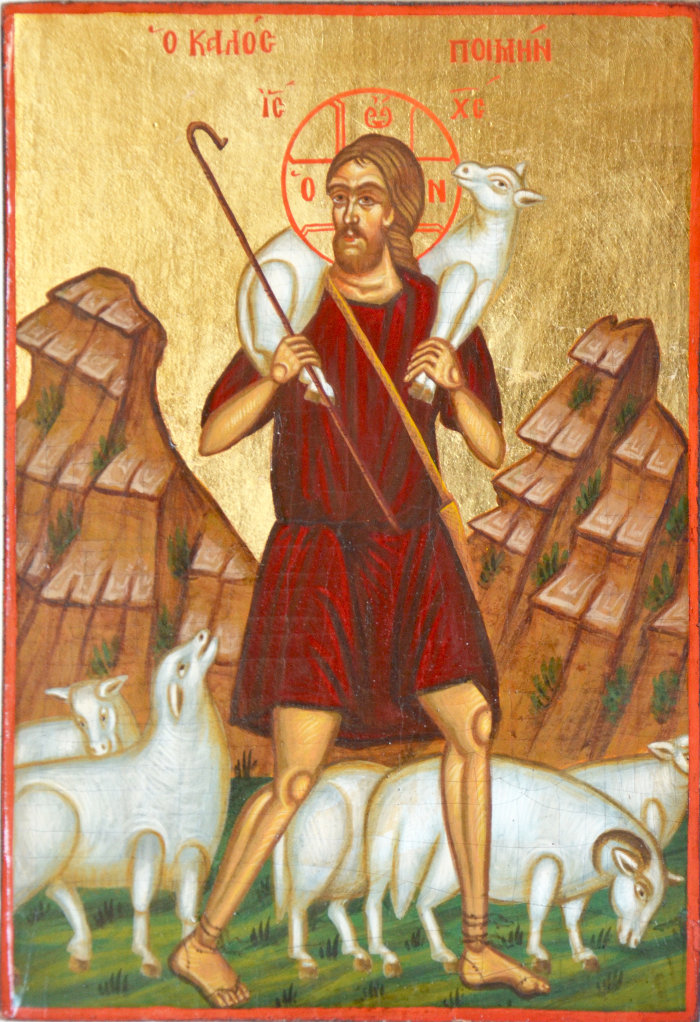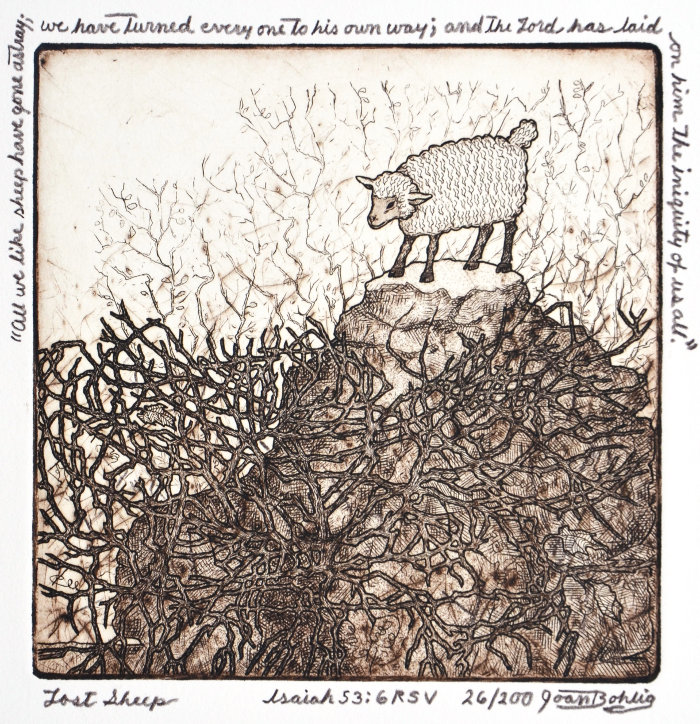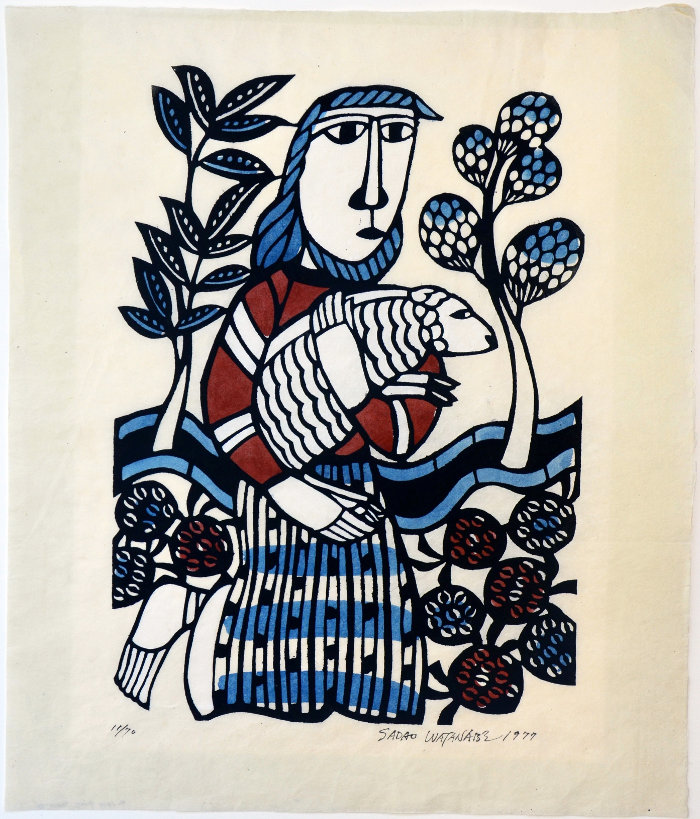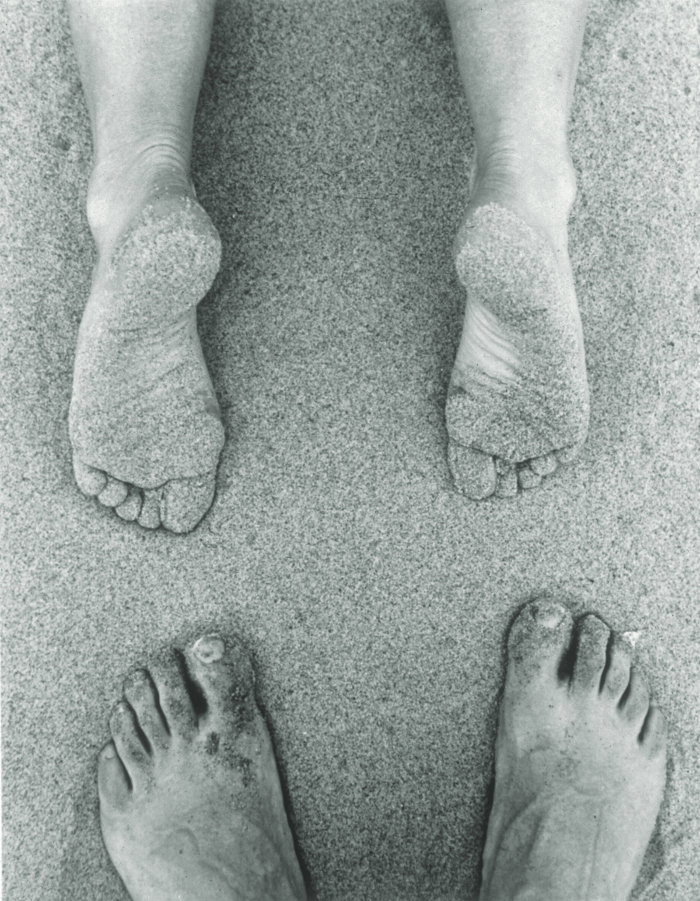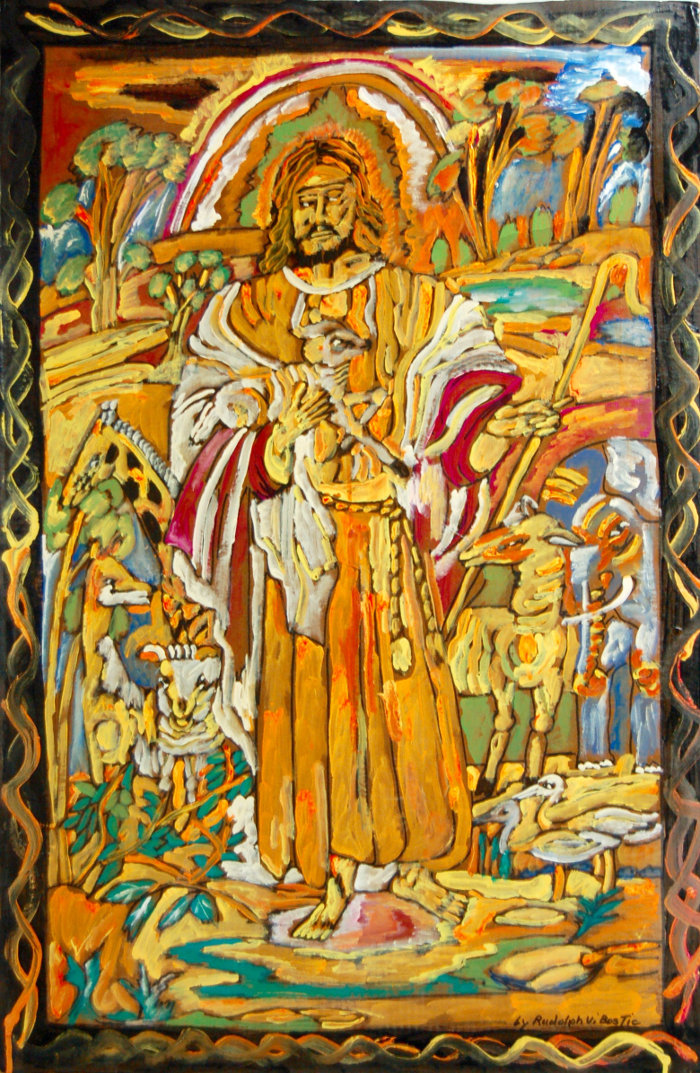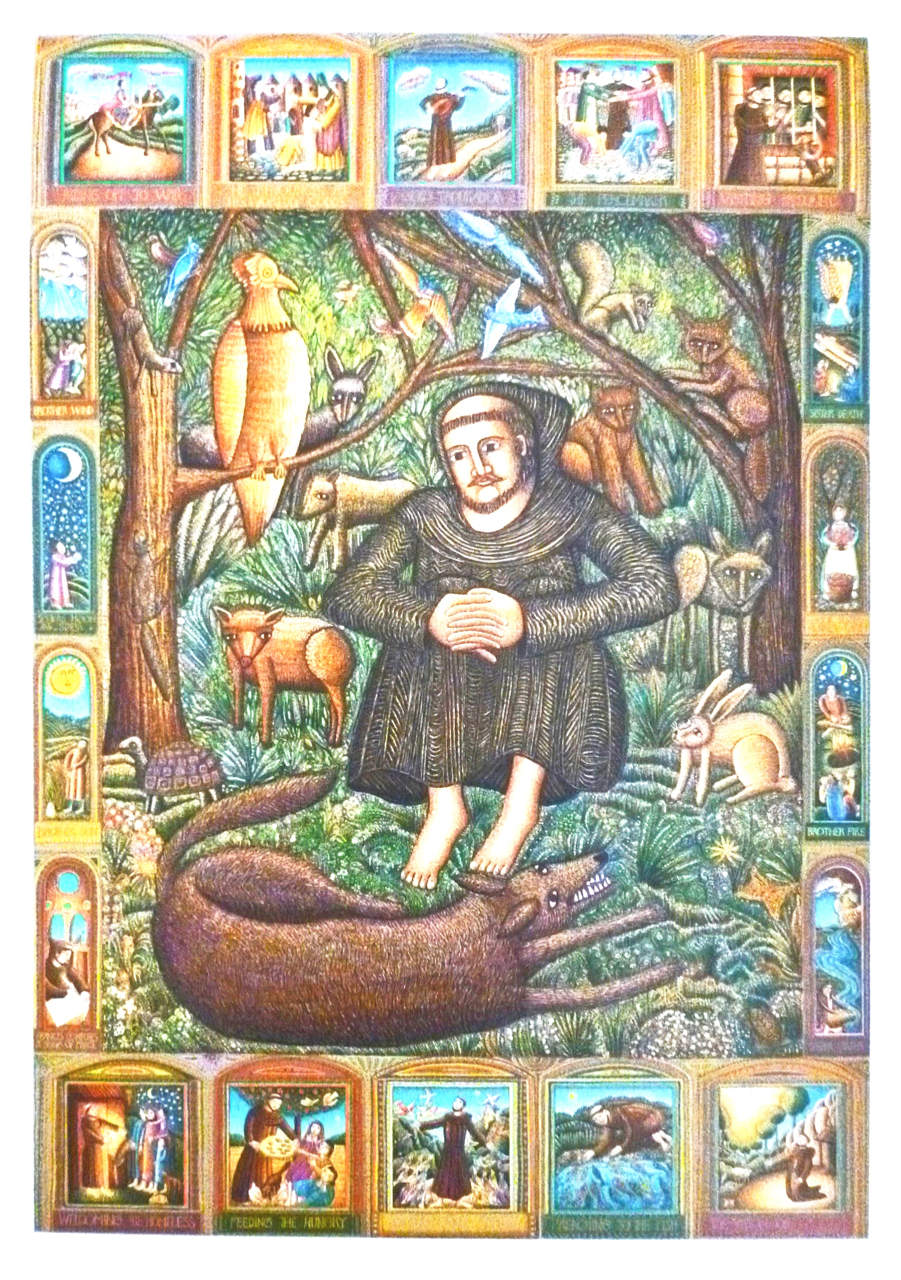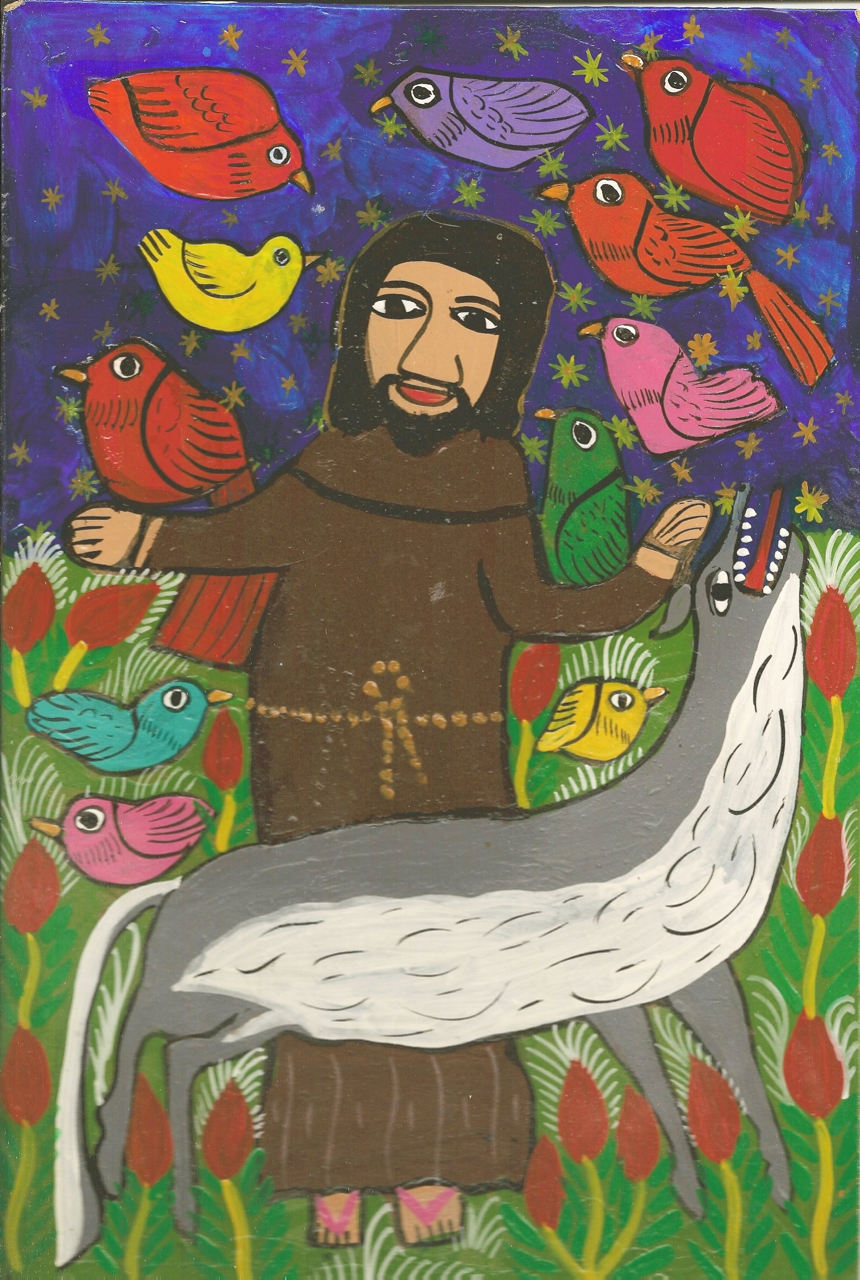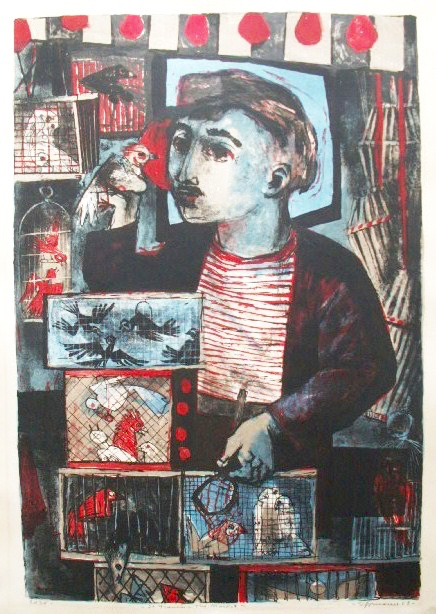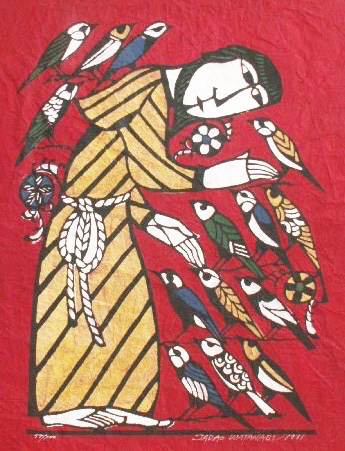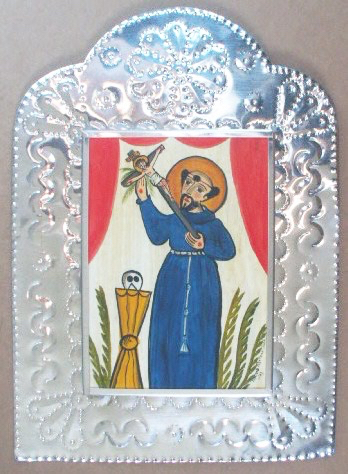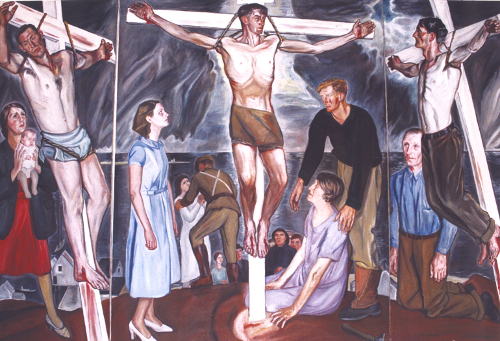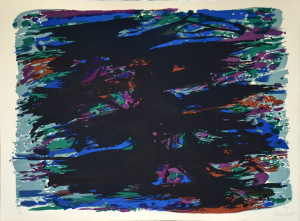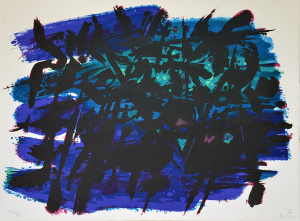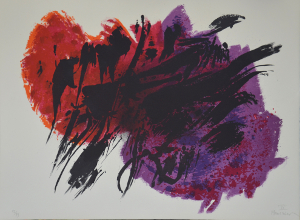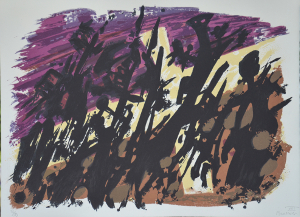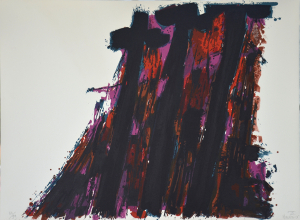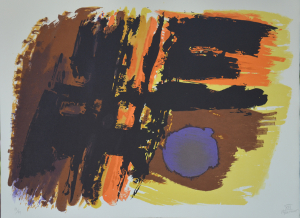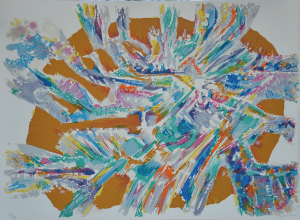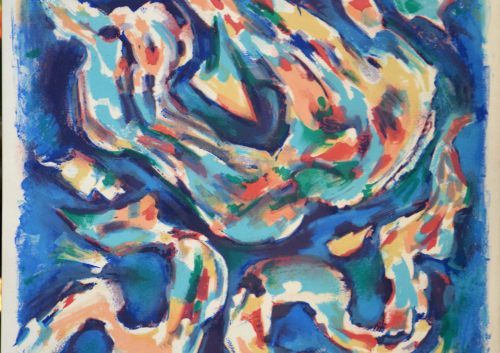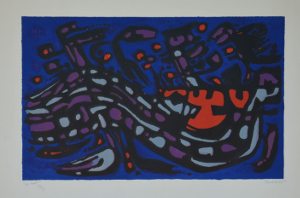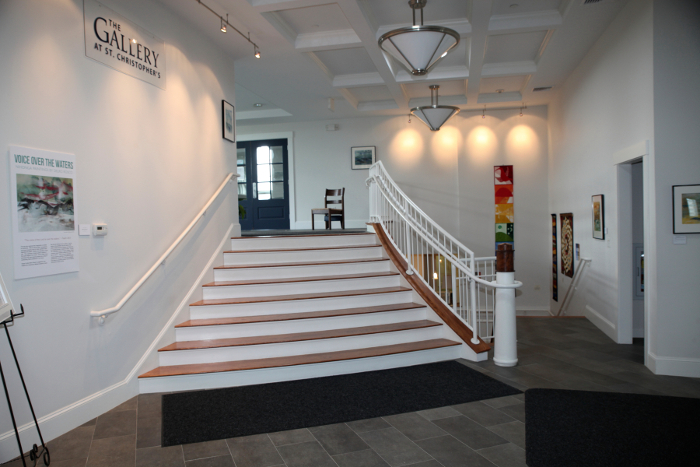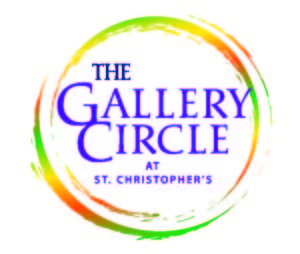Autumn 2023:
Who exactly is my neighbor? The origin of the word neighbor comes from two Old English words. Neah means “near” and gabur means “dweller.” So together these two words suggest that a neighbor is someone who lives nearby. But, as we will discover in this exhibition, the Bible expands the meaning of neighbor. Jesus is asked by an expert in the law, “Who is my neighbor?” and in customary fashion Jesus responds by telling a parable, the Parable of the Good Samaritan, as found in Luke 10:25–37.
Click here to download the complete exhibition brochure.
Previous Exhibits:
Spring/Summer 2023: The Four Gospels in Collage: Transformative Style Interpretations of Master Artists
The Art Committee at St. Christopher’s is pleased to present “The Four Gospels in Collage: Transformative Style Interpretations of Master Artists,” an exhibition by San Diego-based artist Karen J. Sangren.
Karen is a retired Art Education Professor and Chair Emeritus of the Department of Art and Design for Point Loma Nazarene University in San Diego.
Karen taught art and design at the college level for over 40 years. During that time she served on an array of local, state and national boards including 20 years of service on the Art Advisory Panel for the California Commission on Teacher Credentialing, which was responsible for writing state standards, approving art education programs across the state of California, and producing standardized tests for the discipline. Outside of the collegiate scope, Karen has taught art to children experiencing homelessness at the St. Vincent de Paul Center and San Diego County schools for 8 years, and she sings in the La Jolla Presbyterian Church Choir. The joy of giving to the health and well-being of San Diego neighborhoods has contributed to content in her visual arts and across her career.
In this series, Karen uses drawings by Da Vinci, Michelangelo, and others to create mixed media collages with colored pencil, metallic penwork, Japanese rice and Italian papers. These works were created during Covid restrictions in 2020, when she was completely isolated. She states, “After working in clay for many years, I began to create sacred-themed art collages in late 2019. Then along came our stealth pandemic in 2020. What better way to combat my own isolation than to clean out my garage?! Art history books were stored there from my university office after reitrement. I recognized I needed to give more away, but when my eyes landed on the oversized 1957 artbook about Leonardo Da Vinci that I had used in 2019, I knew I could use it again. I would create more design exercises from the book to endure the long, isolated days…I started tearing more pages out of the book. Something I had rarely done before! Covid art therapy, perhaps. And so, this exhibition began.”
Autumn 2022/Winter 2023: Come! The Table is Ready.
Come! The Table Is Ready celebrates gathering with family and friends, but also with those of common faith to participate around the table of our Lord.
This exhibit includes work by historic artists such ad Dürer, Rembrandt, Kokoschka, Jasper Johns and Sadao Watanabe, as well a contemporary pieces by Wayne Adams, Gail Smith, Tanja Butler and Nicora Gangi. The show also takes the viewer on a journey through Scripture beginning with an engraving of Melchezedek serving Abraham bread and wine, a Russian icon of Abraham entertaining Angels, an etching by Jacque Callot of the Holy Family at the dinner table, and many interpretations of the Last Supper.
The pieces in this show come from Mexico, Ukraine, Germany, England, and France and include sculptures, paintings, silver works, an original poster of Andy Warhol’s Last Supper, and even a 1950s paint-by-number Last Supper.
Summer 2022: Abraham Storer: Jerusalem
Abraham Storer is a landscape painter who depicts the land and objects within it as a means of exploring interior personal states, both psychological and spiritual. Originally from Cape Cod, his work reflects his connection to the local landscape as well as diverse places around the world where he has lived, including Israel where he was a Fulbright Fellow in 2011–2012. Here is a statement from Storer on this exhibition:
The work in this exhibition was created while I lived in Jerusalem. I first lived there for a year in 2011 where I created a body of work responding to the landscape as a fraught symbol of the spiritual and political. I returned in 2014 and stayed for five years, teaching at an international school, starting a family, and continuing to paint. This work is a reflection of that experience.
The heart of this exhibition is a series of diptychs, which juxtaposes the soil and skies of Jerusalem. The soil is taken from different locations of political and religious significance in the city, such as Mount Zion, Valley of Gehenna, Mount of Ascension etc.; the watercolors are of Jerusalem skies. This piece abstracts the landscape considering abstraction’s historical interest in the relationship between material and spirit. I attempt to represent Jerusalem as a place both concrete and physical but also spiritual and ephemeral.
This exhibition also includes representational oil paintings of Jerusalem. The paintings often depict Jerusalem and the surrounding landscape through windows, a metaphor for the radical subjectivity—or framing—from which this landscape is approached. Often the windows are themselves obstructed with cut-out images, fencing, or bars presenting layers of symbolism in reference to the political and religious perceptions of the “Holy Land.” Some of the symbols feature broken bodies, referencing the body of Christ and the body politic—fitting symbols through which to ‘see’ Jerusalem.
Lastly, I have a series of drawings and paintings of religious figures in black. I am interested in the use of black cloth as a covering device in the three Abrahamic religions, as seen in the burka and abaya of Muslim women, the clothing of Hassidic and ultra-orthodox Jews and the robes of Christian priests and nuns. Formally, this subject interests me in the way that it abstracts the human figure, especially in the landscape where the figure becomes a shape in space. The individual becomes reduced in the service of expressing a spiritual commitment. The body is obliterated and transcended. Singular identity is eclipsed by an image that is universal and collective. However, I am interested in the way the image can also appear threatening or ominous in certain contexts.
Jerusalem is a place that conjures spiritual inspiration for many, including myself, however, it’s a complicated place and mired with conflict and the real-life problems of any place. It’s my intention that this work reflects that duality.
Spring 2022: Ben Zion: Biblical Themes Portfolio
Reared by his father for the rabbinate, Ben-Zion Weiman (1897–1987) came from Poland to America in 1920. After turning to art (and shortening his name), he became a founding member of The Ten, the 1930s’ avant-garde group, with Ilya Bolotowsky, Lee Gatch, Adolph Gottleib, Mark Rothko, and others. Ben-Zion’s work is represented in many museums throughout the country including the Metropolitan, the Whitney, and the Museum of Modern Art in New York, the Art Institute of Chicago, the Philadelphia Museum of Art and the Phillips Collection, Washington. The Jewish Museum in New York opened in 1948 with a Ben-Zion exhibition.
Ben-Zion brought his blunt, powerful expressionism to Biblical subjects not only in his paintings, but also in four intaglio portfolios of eighteen prints each. The first three portfolios, Biblical Themes (1951), Prophets (1952), and The Book of Ruth, Job, and Song of Songs (1954), were published by Curt Valentin, who was also Max Beckmann’s dealer. The fourth, Judges and Kings, delayed for ten years because of Valentin’s untimely death in 1954, was printed by La Couriere in Paris, who also printed etchings by Picasso, and published by Graphophile.
Autumn 2021/Spring 2022: Fill the Earth with Music
This exhibition celebrates the installation of the church’s new Dobson pipe organ. Singing and musical instruments have been vital components in the life of the believing community as far back in the Bible as Jubal who played the kinnor or harp. King David wrote many psalms, one of which is Psalm 150, which charges us to praise the Lord with the trumpet, cymbals, stringed instruments, and organs. An engraving in this show has drawings of many biblical instruments.
Artists from the earliest times have portrayed musicians and used music as a focus of their work: from the 15th century illuminated French Book of Hours with David’s Psalm 51, to the plaster cast of Donatello’s St. Cecilia, and Barbara Zuber’s joyful depiction of African Americans’ animated singing and dancing. There is no end to the list of artists who have offered us remarkable art celebrating the joy of music.
It is impossible to imagine the church without music. The monastic tradition used Gregorian chant and choral singing to enhance worship as seen in the elaborate Bifolium Antiphonal Leaves that a choir used in the 16th and 17th centuries. De Hooghe’s 18th-century engraving of the title page to the book of Psalms shows how the Dutch viewed music. Not only the church, but also the Jewish community celebrates music’s significance as seen in Rosenstein’s serigraph, Sing to the Lord a New Song and Marc Chagall’s two lithographs.
Artists from the 21st century continue to be inspired by the depth and joy of music. Marianne Lettiori, Doug Giebel, Ed Knippers, and Melissa Valliere are examples of this rich tradition.
Autumn 2020 through Summer 2021: From Eden to Eternity: Embroidered Interpretations of Biblical Stories
Click here to enjoy an online gallery of many of the molas on display at St. Christopher’s, as well as an interpretive essay.
Autumn 2019/Winter 2020: Saints (Canonized and Otherwise) by Nancy Marek Cote
Born and raised in Fall River, Massachusetts, Marek’s childhood memories of apartment living, unkept yards, abandoned chicken coops, lilac bushes, weeds, wildflowers and an overall obsession with nature, all served as an initial source of her endless fascination with sound, color, and image; the beginning of a blossoming love and appreciation of the world. In this context, Marek experienced spirituality and simply understood the joy of finding God through the freedom to explore and imagine.
Upon completion of a BFA in painting and receiving the Excellence in Art award from UMASS Dartmouth, Marek began writing and illustrating children’s books. Her work has earned numerous awards and has been exhibited internationally. Marek’s resume includes teaching children’s book illustration in the C.E. Program at Rhode Island School of Design, the 2018 Jurors’ Award from the New England Society of Children’s Book Writers and Illustrators (SCBWI) exhibit at the Wedeman Gallery at Lasell College in Newton, Mass., and most recently was chosen to participate in a week-long TENT Program 2019 for writers and illustrators at the Yiddish Book Center in Amherst, Mass.
In addition to her prolific work as an author/illustrator of children’s books and poems, Marek studied with renowned artist, Brother Micky McGrath during the summer of 2018 at Boston College School of Theology and Ministry in a course entitled “Wise and Holy Women (and a few good men).” Whether working on a new picture book, painting or simply enjoying the beauty of all creation, Marek continues to explore and render subjects enabling all to think more deeply about the human/God experience.
Marek’s current exhibit, Saints (Canonized and Otherwise), connects the many strands of both her personal and professional endeavors in a collection of sixteen paintings, which in a unique style capture the person and moment of the presence and relationship with God. Her hope is that this exhibit will inspire women, men, and children of all ages and backgrounds to a heightened appreciation of the beauty, courage, and passion that led the sixteen on their own faith journeys.
Summer 2019: Violent Grace by Edward Knippers: Knippers’ paintings are dramatic tableaux, Baroque in their expressive intensity and theatrical settings; they do what many art historians have said could never be done again: make the classical biblical subjects come alive in paint. To read a statement about the show written by the artist, click here. For more information about the show from various sources, click on the links below:
Autumn 2018/Winter 2019: Celebrating Our English Bible: In 2017 Christendom celebrated the 500th anniversary of the Reformation. This historic event coupled with Martin Luther’s ground-breaking translation has made it possible for Christians over the last 500 years to read the Bible in the vernacular. The impact of this cannot be overstated. However, the Reformation was not restricted to Germany alone. Circumstances propelled an English movement that yearned for a Bible in its own language.
The goal of this exhibit was to visually tell the story of how the Bible was translated into English, giving the viewer a new appreciation of the difficulty and challenges those courageous scholars faced. The exhibit began by looking at St. Jerome, who in the 4th century translated the Bible into Latin, known as the Vulgate. This translation was in use for a thousand years. In 1522 Martin Luther translated the Bible into German, and later he encouraged William Tyndale to finish his English translation. Other translators followed in the 16th century with new English versions, and then in 1611 the Kings James Bible, the most beloved of all English bibles, was published. Original copies of these various translations were included in this exhibition, including even a page from the very first printing of the King James Bible.
All of this came at the cost of hundreds of lives and great sacrifice. By realizing the sacrifices that were made to give us the Bible, may we more consciously celebrate this cherished gift, our English Bible.
Summer 2018: Reflecting the Glory, featuring Sandra Bowden’s most recent work. She shares:
I have come to see that my art is best described as seeking connections to our past. For over fifty years I have worked in a sequence of multiple series of paintings and prints that related to archaeology findings, geological forms, early languages, musical scores, ancient illuminations, and the history of art. Each of these areas of exploration has enhanced my appreciation for the great treasures from our shared past.
Light and darkness, reflection and shadow, are the visual vocabulary of the human and divine encounter. In our search for transcendence through art, no material has imaged the immaterial so well as gold. Down the centuries we have beheld the glory of God reflected from the gold of crosses, crucifixes and communion vessels. The objects in this exhibition show light, absorbed and lost, found and reflected, transformed by gold.
Reflecting the Glory is my most recent work continuing this conversation of connections as a way to pay homage to the “Icons of Western Art.” This show highlights several gilded encaustic panels that recall many iconic paintings from our Christian heritage. Their distinct shapes identify the historic works, but because of their solid gold surface, allow the viewer to delight in the radiance of each panel, while drawing on memory and imagination to fill in the forms.
Autumn 2017/Spring 2018: Making Comparisons is an invitation to embark on a personal visual journey. The goal of Making Comparisons is not to just look, but to see, to go deeper than the surface as a way to interpret the work.
This show is an interactive exhibition that asks the viewer to participate by deliberately comparing the art on topics such as the Trinity, Flight to Egypt, Water, Veronica’s Veil, Abraham and Isaac, the Nativity, Madonna and Child, and the Good Samaritan. Each group has several paintings or prints that explore the theme from various perspectives.
It is the viewer’s responsibility to study the art, discover what is similar, and where there are distinct differences. It is also important to ask questions: What was the intent of the artist? How was the artist addressing the subject? From what period of history was the work created and how did this impact the approach? Then decide which speaks to you personally. By going through this process you will know why a piece speaks to you. Learn to see and enjoy the journey.
Summer 2017: East meets West: Women Icon-Makers of Ukraine features 23 icons by Ivanka Demchuk, Natalya Rusetska, Ulyana Tomkevych, and Lyuba Yatskiv in their first group show outside of their hometown of Lviv, the cultural capital of the region. Lviv (also known as Lemberg, Lwow, and Lvov) has been a crossroads of different cultures, ruled in modern times by the Austrian Habsburgs, Poland, and Soviet Russia. It has long played a pivotal role in the Ukrainian quest for a national identity and was central to the popular movement that brought about independence from the Soviet Union in 1991. West Ukraine also lies on the boundary where the Byzantine East meets the Latin West. The dominant faith of much of the region is Ukrainian Greek Catholicism, a branch of the Catholic Church that follows the Eastern Orthodox form of worship, including the veneration of icons. This intermingling of cultures and faith traditions in West Ukraine has resulted in a style of sacred art unique in the Christian World. Suppressed by the Communist regime, Ukrainian Greek Catholic culture has experienced a Renaissance since the breakup of the Soviet Empire.
One powerful expression of this cultural renewal is the new school of iconography represented by these four women artists. They are respectful of the canons of a conservative sacred art form, while experimenting with different media and color palettes. They offer contemporary variations on time-honored themes with borrowed motifs from Ukrainian folk art. What makes the innovative works of this quartet of women iconographers all the more impressive is their success in a genre of sacred art traditionally dominated by male artists.
To learn more about this exhibit, download a two-part article written by John Kohan, extracted from the church newsletter, Soundings: Themes of Eastern Orthodox Art by John Kohan.
Winter 2017: Jesus: Good Shepherd and Lamb of God. With over 30 drawings, paintings, original prints, sculptures and photographs, this exhibit explored, through the eye of the artist, how this theological concept has been interpreted from the 17th century to the present. This display included artists from the Philippines, Japan, Bulgaria, England, Germany, Slovakia, Italy, Netherlands, Israel, Argentina, Greece, and the United States.
The exhibit began with a photograph by Roger Varland titled Cain and Abel and two pieces of Abraham’s sacrifice of Isaac as a kind of foreshadowing to the ultimate sacrifice of Jesus as the Agnus Dei (Lamb of God).
Jesus is the Good Shepherd par excellence. Psalm 23 says, “The Lord is my Shepherd, I shall not want.” Jesus explains “I am the good shepherd; I know my own and my own know me, as the Father knows me and I know the Father, and I lay down my life for the sheep” (John 10:11–5). This portrayal of Jesus as the Good Shepherd has been a favorite of Christians since early Christianity and still today resonates with the faithful. Artists such as Sadao Watanabe, Eric Gill, Dimitris Moulas, and James Young each explore the topic with personal and skillful imagination.
Jesus as the Lamb of God is a theme that runs throughout the Scriptures. He is our shepherd in the sense that he cares for God’s flock, but he is also the lamb in the sacrificial sense. Because the lamb is humble, gentle, and innocent, lambs were often engraved on the tombstones of children as seen in Kathy Hettinga’s Lambs of the Saint Luis Valley. In Christian symbolism, the lamb represents Jesus, the Lamb of God. Standing with a banner, the lamb represents the risen Christ triumphant over death. Standing with a cross and a gash in its side, it symbolizes the passion of Christ. Seated on a throne or a book, the lamb represents the judgment of Christ. Artists such as Henry Moore, Bernard Buffet, Wayne Roosa and Tyrus Clutter are included in this section of the show.
Autumn 2016: St. Francis: Troubadour for God. St. Francis ranks just below Christ, the Virgin Mary, and the angels as a favorite subject in Western sacred art. The frescoes Giotto painted of the life of St. Francis in Assisi and Florence are milestones in cultural history, and the saint’s likeness appears in works by Cimabue, Giovanni Bellini, Caravaggio, El Greco, Zurbaran, Rubens and other Great Masters.
The images of St. Francis on view in this exhibition are the creations of a diverse group of international artists and artisans. You can also see a serigraph by John August Swanson, a wood engraving by Fritz Eichenberg, and lithographs from a Franciscan series by French graphic artist J. Frederic Loisel. Also included is a large processional cross, known popularly as the St. Francis Cross, in front of which St. Francis dedicated himself to the service of God. A group of photographs from present day Assisi take the viewer to this beloved city as it appears today.
It is hoped that Saint Francis: Troubadour for God will help viewers see this remarkable saint from a deeper perspective than just a lover of animals—to embrace Saint Francis as one of the most remarkable saints of the church who can inspire Christians in the 21st-century.
Most of the pieces in the show are borrowed from the collection of John Kohan, who has an internationally known website, www.sacredartpilgrim.com. Kohan was the chief correspondent for Time to Russia for many years, and his site reflects his keen skills in writing about the artists and schools of art. To read an essay by Kohan on this exhibit, click here: St. Francis of Assisi: Troubadour of God, by John Kohan. Mr. Kohan lead a gallery talk on Sunday, September 18, 2016, at 11:15 am.
Summer 2016: Crucifixion: Frederick S. Wight and other 20th Century Artists. The centerpiece for this show was the large Modern Crucifixion triptych painted by Frederick S. Wight in the early 1930s when he was living in Chatham. All of the characters in the painting were sea-faring folk of Cape Cod that Wight knew, most of whom have been identified. To read a recently published article about the spiritual implications of this piece, click here. This exhibition offered an intimate glimpse into how artists of the last century artistically wrestled with the crucifixion. Twenty artists were brought together to offer a dramatic visual dialogue about how the crucifixion and its relevance in recent history are envisioned. Included in the show were such artists as Georges Rouault, Marc Chagall, Eric Gill, Pablo Picasso, Otto Dix, Lovis Corinth, Ed Knippers and Nancy Snooks. To read an essay on the show written by Sandra Bowden, Curator, click here:
Winter/Spring 2016: Alfred Manessier: Composer in Colors—Suite de Pâques and other lithographs. Works of the non-figurative French painter and stained glass maker of sacred art, Alfred Manessier, were on display in this meaningful show. The bulk of the exhibition, the 1978 Suite de Pâques was a series of fifteen abstract images, many consisting of luminous color radiating from beneath dark latticed patterns. The show included several other religious lithographs as well.
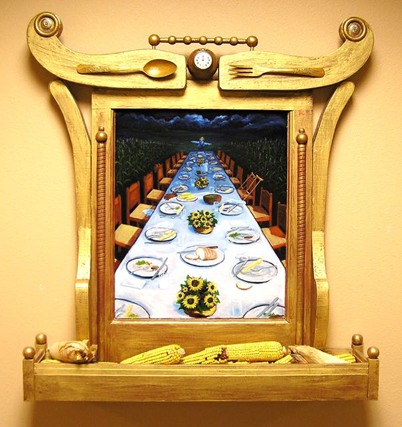
Wilimek: We All Got Up to Dance
Autumn 2015: Picturing the Parables, a Christians in Visual Arts traveling exhibition, related to the life of Christ. Twenty artists restated the stories of Christ from new and unique perspectives, with time-honored to non-traditional media. These works varied from the narrative representational to the more abstract. Included in the exhibit were Parable of the Sower by DeLynn Coppoletti (2010), Go Fish by David E. Levine (2010), and We All Got Up to Dance by Gregg Wilimek (2003).
Summer 2015: Delro Rosco: Voice Over the Waters. The 26 works in the exhibition were seascapes inspired by scripture, everyday life, and beauty found in nature. The works were the restful of the artist’s deeply personal dialogue with God and an ongoing journey in search of hope.
Winter/Spring 2015: Otto Dix: Matthäus Evangelium. Featuring 36 lithographs by the German expressionist, this show told the story found in the Gospel of Matthew. Dix is known for work that focused on those at the margins of society, an aspect that was strongly felt in this show.
The Gallery at Saint Christopher’s seeks to present sacred art of high quality to the congregation and to the local community by offering:
-
- sacred art that helps viewers see Scripture and issues of faith in a new way;
- visual expression of faith that enhances spiritual development;
- educational opportunities to expand visual literacy;
- the development of a permanent collection.
